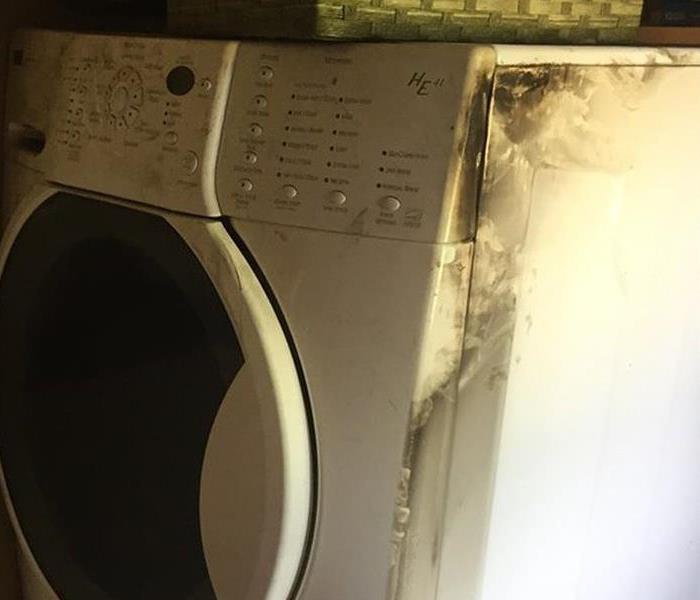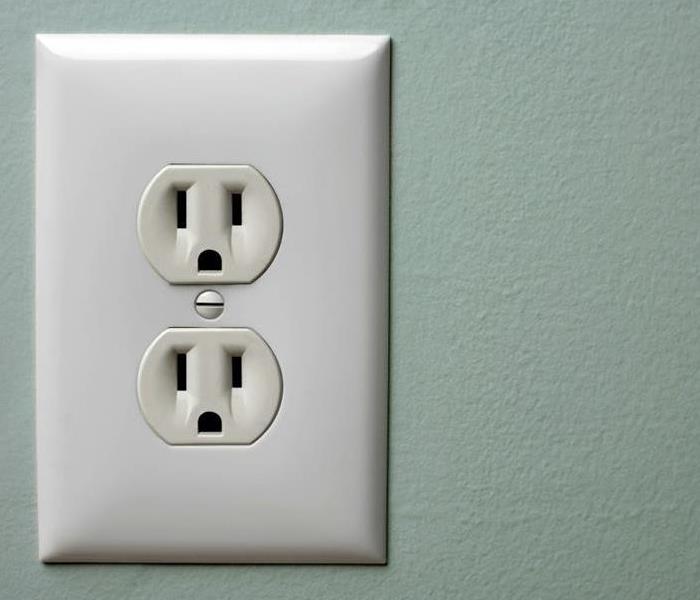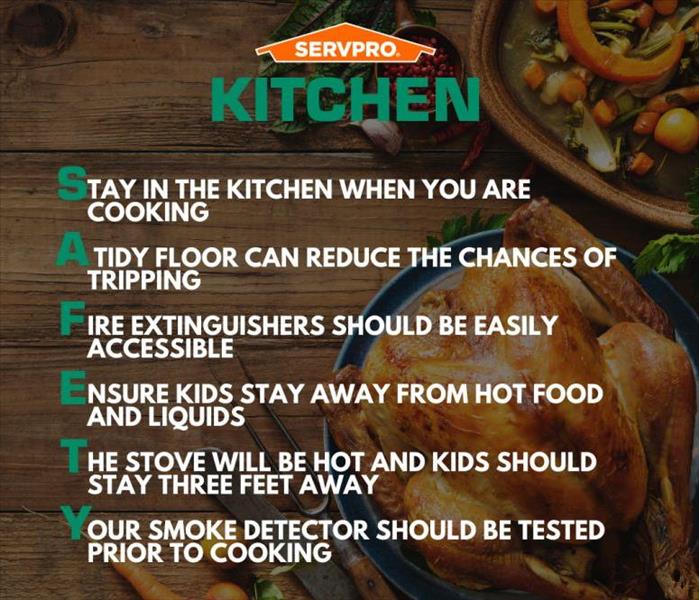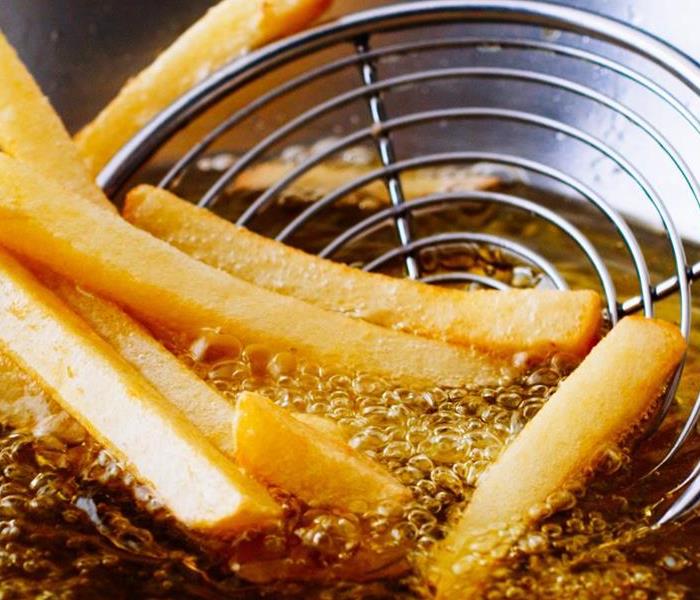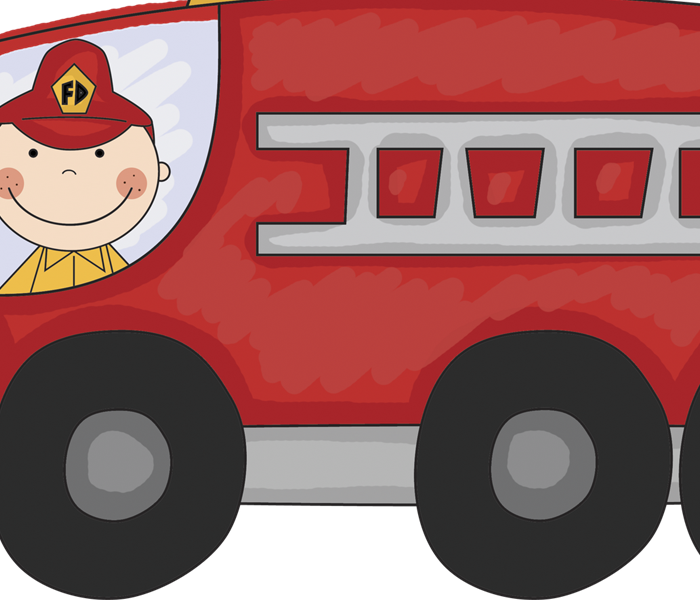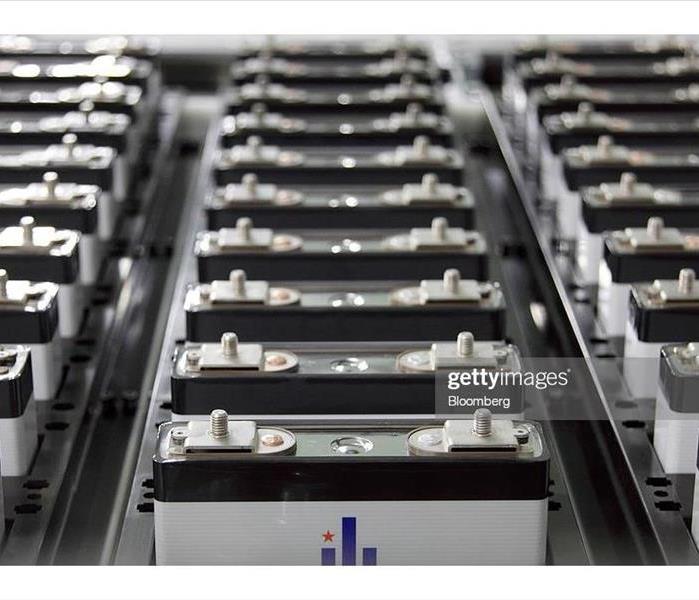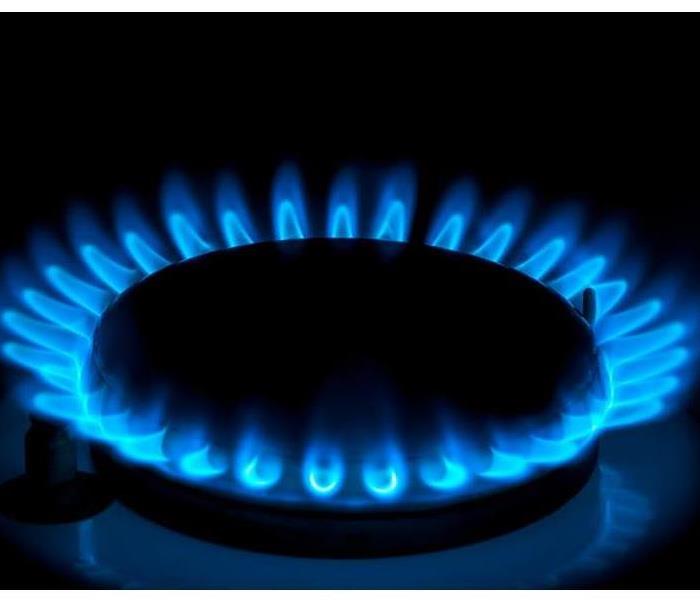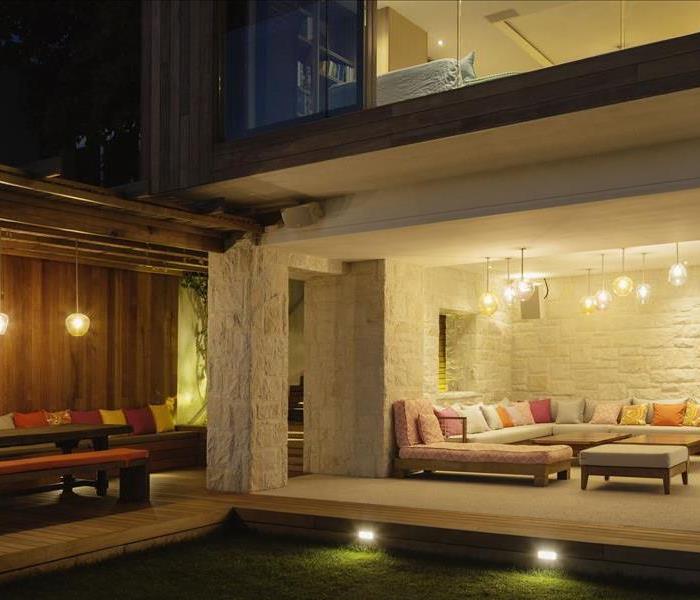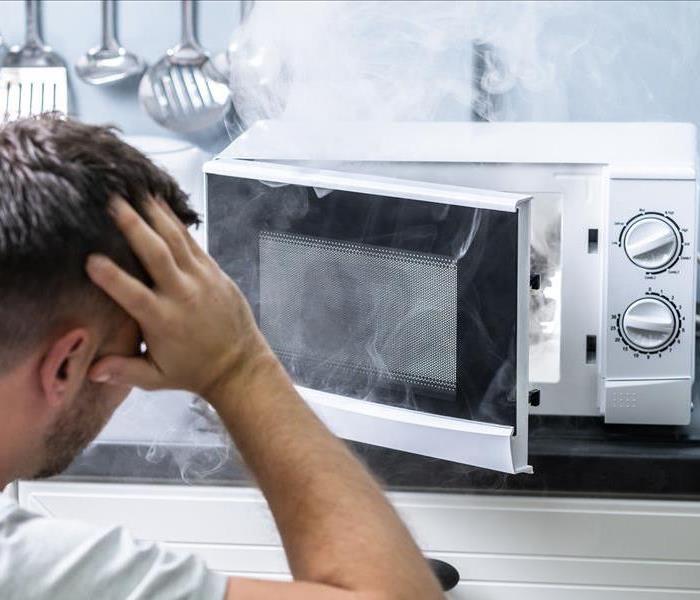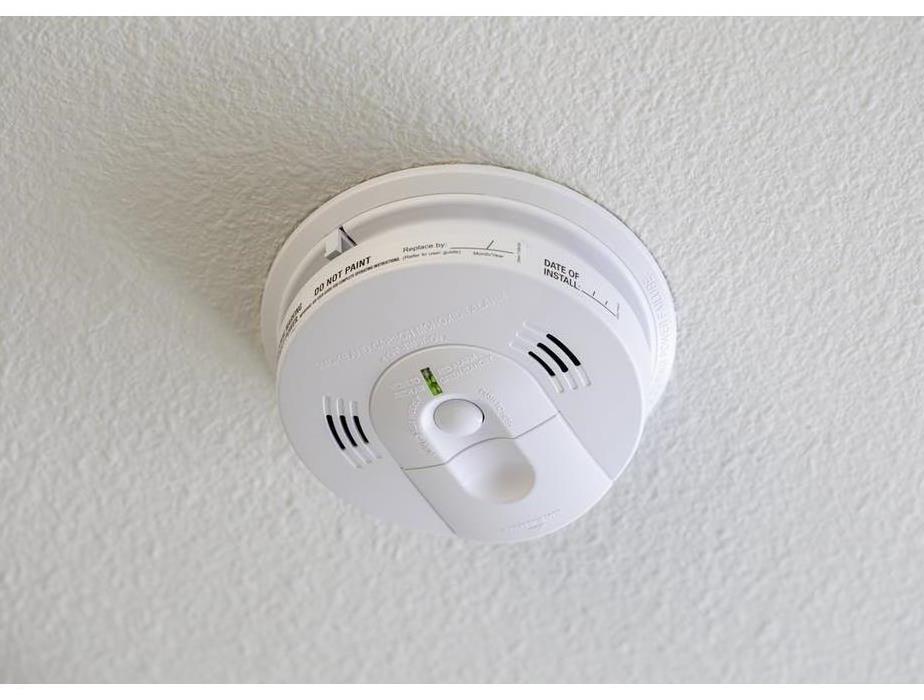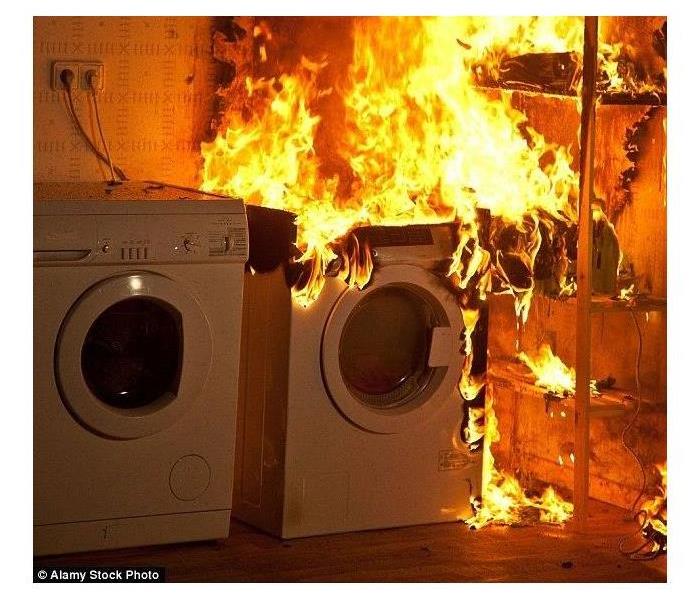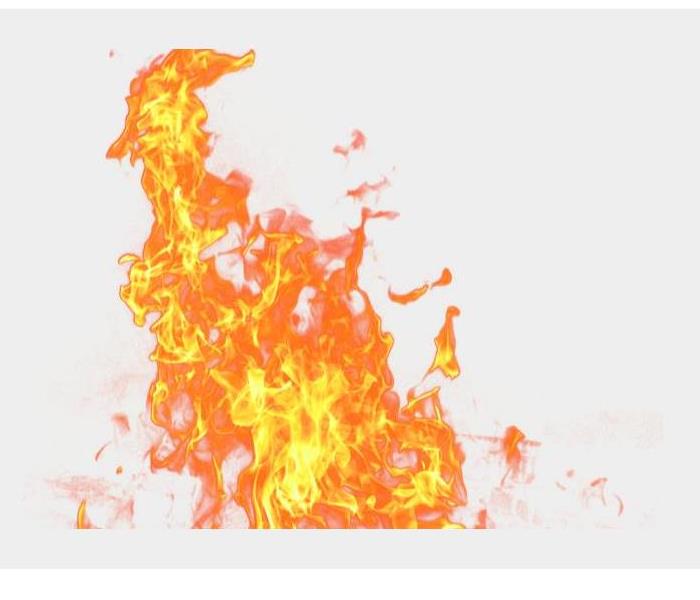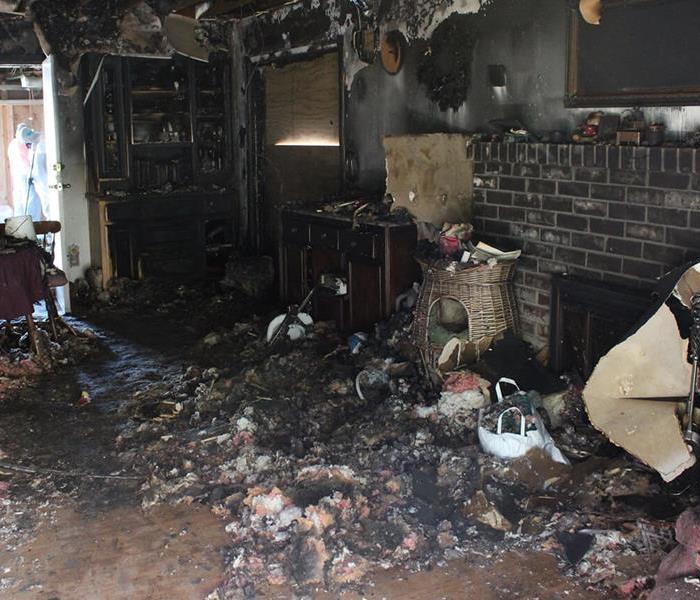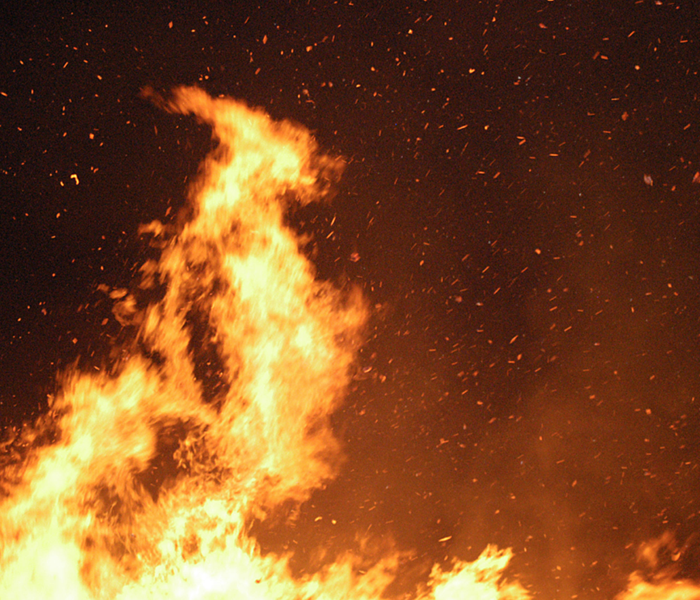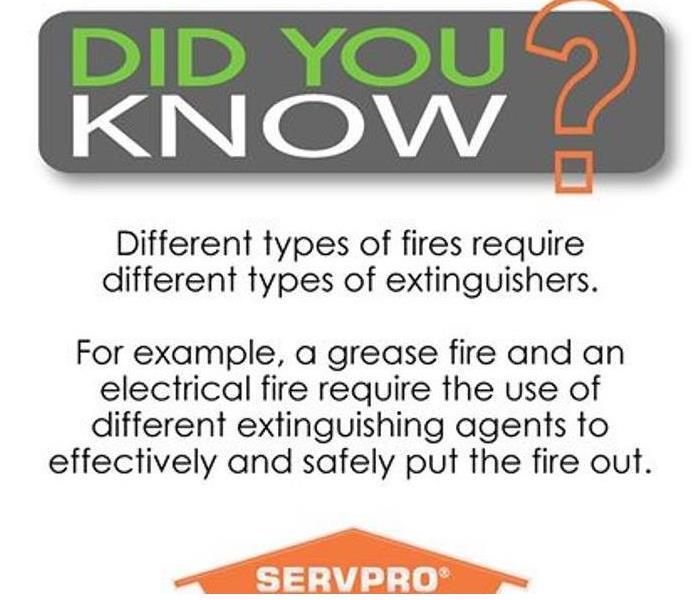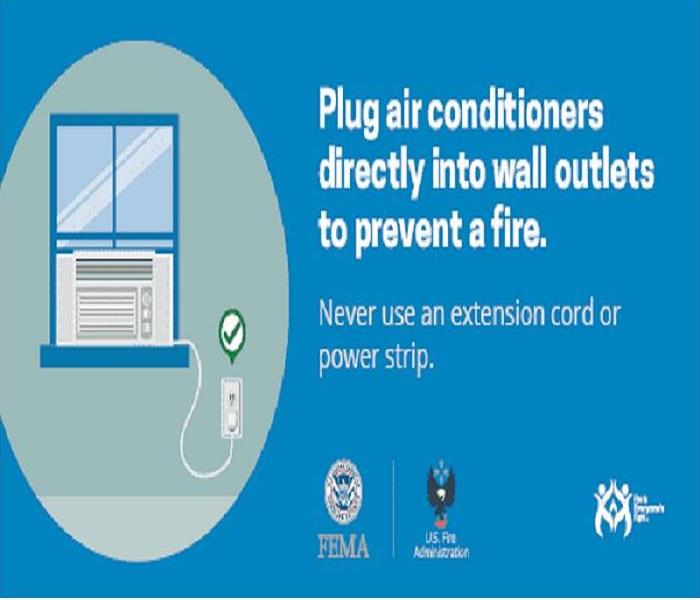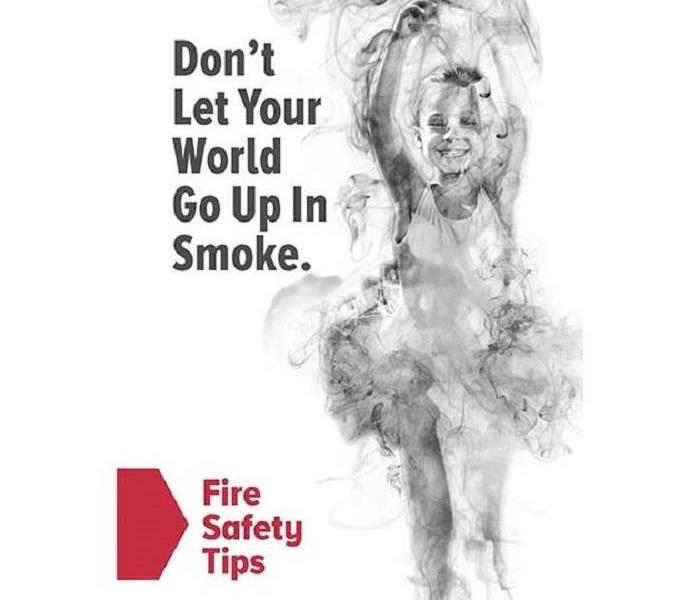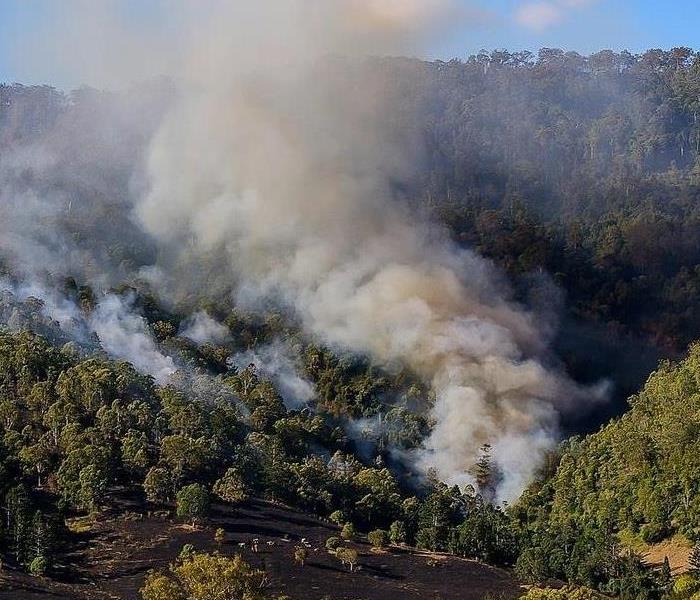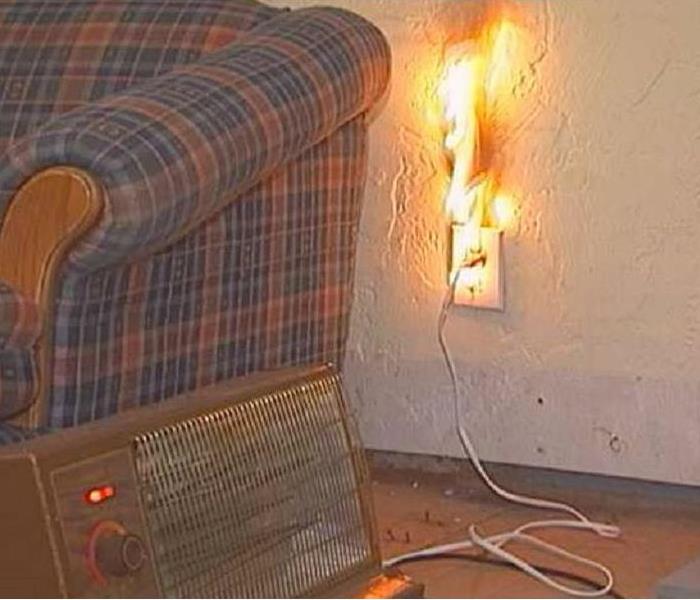Recent Fire Damage Posts
Fire Plans For East Honolulu Businesses Are Integral To Being Safe!
5/1/2023 (Permalink)
Having a fire plan is simply indispensable to your business safety, keeping you, workers, and equipment ok during the worst of times. Being honest about one's potential risks from every source- including but not limited to equipment, stoves, open fires, and natural disasters informs one of their greatest concerns.
Commercial fires are always a costly possibility, preparing for it is the best way to keep your costs to the minimum.
Planning for fires in your commercial space may not seem like an easy feat. A great place to start is from a “safety standpoint”. Where the first pillar in which you establish your fire plan is all about safety. Safety for all living organisms, and equipment. Showing one’s employees on the key logistics if a fire was to occur is the most important way to keep everyone safe if it ever becomes a reality.
This can come through training your employees on certain protocols that succeed in a real fire emergency. If you deal with equipment that are more prone to chemical or oil fires, one should teach their employees on the differences of handling various fires.
There are many tips on cultivating good fire evacuation plans, with the internet on one’s fingers there are so many tools. Here are some of the most noteworthy ideas that one might fester one when creating a fire evacuation plan.
Deciding evacuation routes, know all the fire exits in your facility, finding all the ways possible one could exit your commercial business. One way to get great advice on your personal fire plan is our local fire stations in the East Honolulu community. Call our local fire officials who can help provide you personalized advice that may scope beyond that of the internet.
Once you decide your best evacuation routes, clearly label them and consistently update your staff. Make sure you continuously practice fire safety by doing annual fire drills.
Running fire drills for your employees to follow accordingly, it is important to run different fire scenarios. There are numerous ways fires can start in restaurants or offices alike. It is beneficial in the long run to integrate various scenarios in one's drills/training. It is unrealistic to fully capture the extent of a fire emergency but to plan for most foreseeable variables helps with preparedness. That may look like stating the fire is from the coffee machine blocking an exit or the turbo oven in the back instead of from the open flames. Personalizing the fire plan will only bring information and a greater gain for your workers, and a peace of mind.
In any case, should your Honolulu business catch ablaze, SERVPRO of East Honolulu is here. We pride ourselves in the knowledge, equipment, and tools necessary to probably remediate and restore properties from natural disasters or natural emergencies.
We will be running right after the authorities to start our through process to help restore your commercial business. "Like it never even happened." Call us at (808)395-9545, for any comments, questions, or concerns.
Escape Plan Basics
3/3/2023 (Permalink)
Because fire is a risk in every building — whether you sleep, study, or work there — you should always have an escape plan. You may need to escape within a few minutes of a fire’s start, so your safe exit depends on immediate warning from smoke alarms and advance planning of escape routes.
Escape Plan Basics
- Include two ways out of every room in all escape plans
- Designate a location to meet outside the building
- Verify that smoke alarms are installed to provide early detection and warning so you’ll have enough time to execute your escape plan
- Make sure doors located in your path of travel can be opened from the inside under all lighting conditions
- Verify that doors located in your path of travel Do not require a key to open from the inside
- Take note of whether any disabled or elderly residents will require evacuation assistance
- Conduct a roll call to verify everyone has escaped the building
- Remain outside until notified by the fire department that it is safe to re-enter the building
- Practice, practice, practice your plan!
If your secondary escape route is a window…
- Make sure the window can be opened from the inside
- Assure the window is large enough for you to pass through the opening
- Verify the windowsill is low enough to allow you to crawl through the opening
- Make sure any security bars can be opened from the inside without the use of a key, and that you can open them under all lighting conditions
- Determine how you will escape if the window is above the first floor: will you purchase a rope ladder or other emergency escape device, or will you wait for the fire department to arrive and evacuate you?
- Make sure sloping terrain, the location of the window, or other factors will not prevent the window from being used as a secondary escape route
Making a Fire Claim in East Honolulu
3/1/2023 (Permalink)
Most property owners in Hawai’i use home insurance, this process is generically the same regardless of provider. Requirements to prove water or fire damages are also similar, especially because we live on such a small island!
Regardless of who your insurance company, these measures needed to estimate the cost of restoration and cleanup.
Fire is an aggressive type of damage, secondary impairments can incur within hours after fire occurs. Soot is acidic, as such it tends to compromise any and all materials it finds itself on.
Weakening drywall, flooring, wood furnishings, or carpets. Additionally, most of the costs from fire damage are ironically from water damage.
The damage due to the water used to put out the fire, destroying electronics, paper goods, wiring, and other water sensitive materials found within homes.
Here is Some Information To Know When You Make a Fire Claim
When a fire claim is filed it needs to be proven by photos and videos. Making sure to thoroughly document any affected areas of your property to help your insurance make the most sound price estimate.
It is crucial for us to be the most transparent with your insurance company when handling fire damage. Knowing the extent of the damage and the allocations needed to rebuild your hale.
Additionally, indicating where the damage has specifically occurred on your goods is equally important. This facilitates your home being re-established to its pre-fire condition, enabling the claim settlement process. With proof of purchase of these goods, replacement or repairing options, and in some cases proof of authenticity are great companions with the list of damaged goods.
Although you may not be able to anticipate damage, it is good to be prepared. With furniture, clothing, items that are of more value to you it is good to know the proper handling when such an occurrence arises.
- The Estimate for Restoration
It is essential for any insurance company to know the true extent of your damage, thus a scheduled appointment for an adjustor or local restoration company such as SERVPRO of East Honolulu occurs. This is the documentation process for the insurance and remediation companies that will aid in fixing those damages.
Preparing to file a fire damage claim it is decisive to get the above information, for your convenience and the most covered when damage arises. Regardless of your insurance policy here in East Honolulu, O’ahu these tips will aid in the remediation and restoration process.
And when disaster strikes SERVPRO of East Honolulu is here for any remediation or restoration needed. Call us (808)395-9545 with any questions, comments, or concerns.
Candles and Incense
1/13/2023 (Permalink)
 As many of us received candles as gifts for the holidays, it's wise to be cautious prior to use.
As many of us received candles as gifts for the holidays, it's wise to be cautious prior to use.
Candles and incense are often used to create ambiance or help celebrate a special event, but they are open flames that pose a threat of fire. Most candle fires take place in the bedroom, and many occur when candles are left unattended. In addition, the winter holidays and New Year’s Eve are peak times for candle fires, so be sure to exercise caution when celebrating with open flames.
Candle and Incense Basics
- Remember: candles and burning incense are open flames, and the safest option is not to have them in your home
- Never leave candles or incense unattended, and always extinguish them before leaving the room or going to sleep
- Keep candles and incense away from curtains, clothing, books and newspapers, and other combustible items
- Keep candles and incense away from flammable liquids (i.e., alcohol, oil, etc.)
- Use durable candle holders, which are made of non-combustible materials, are big enough to collect wax drippings, and don’t tip over easily
- Trim candle wicks to one-quarter inch, and maintain this wick length throughout the candle’s life
- Extinguish taper and pillar candles when their wax melts down to within two inches of the holder, and extinguish votives and other encased candles before the last half inch of wax starts to melt
- Use flashlights during blackouts instead of candles, and always avoid carrying lit candles whenever possible
Smart Home-Owners Add These Three Clauses in Case of a Fire Emergency
1/1/2023 (Permalink)
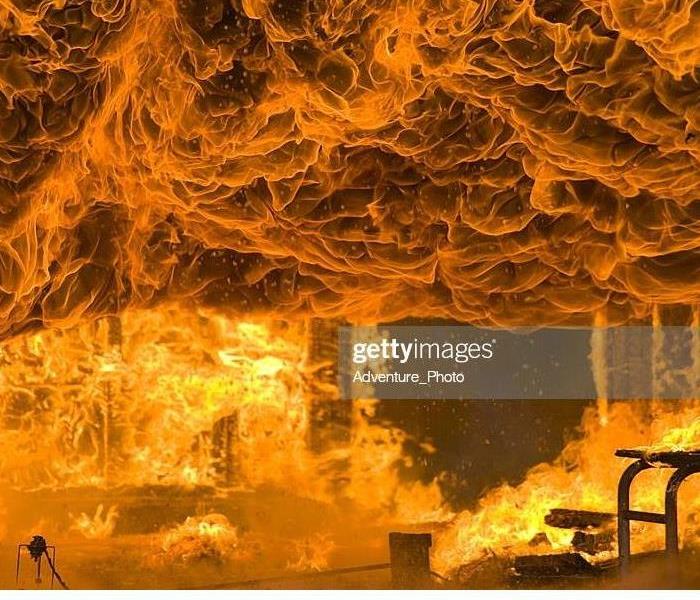 Keeping honesty and transparency at the fore front of communication is integral in keeping your property and assets safe during troubling times.
Keeping honesty and transparency at the fore front of communication is integral in keeping your property and assets safe during troubling times.
Ensuring Safety for your Home and Tenants is Integral in Saving Money, Time, and Confusion
It is important to ask questions on emergencies before disaster strikes. Such as who is responsible for fire damage on your rental property, how are the costs delegated?
The easiest way to avoid confusions and uncomfortable conversations is simply stating them in your lease. Making these clauses in your agreement keeps you protected and your tenant notified.
- Tenant(s) Need Rental Insurance
Adding into a renter’s lease that rental insurance is needed, stops uncertainty in its tracks. Rental insurance usually covers natural disasters such as fire damage. This ensures if there is an emergency then the renters goods are taken care whilst the restoration process happens.
It also means that the tenant(s) can stay elsewhere paid by the insurance. That if a fire hits, the renter acknowledges their proper procedures to take place for their goods and personal safety.
- Create a Guideline for Momentary Housing
Although most renter’s insurances cover temporary housing, especially in East Honolulu where most end up in hotels for the duration of restoration. Transparency is key to maintaining a healthy relationship model with your tenant and property.
Clearly creating an outline of what happens when your property is unlivable based on questions like if rent is taken care of the time repairs take creates clear boundaries before they are needed. Misunderstandings cause disillusions, the last thing you need as a property owner.
- Set Expectations for Repairs
Sometimes repairs can be costly with new materials, technicians, and time. The time it takes during restoration differs, when it becomes an indefinite period with inhospitable conditions; that should be outlined within the lease. For the safety of your tenant, whether that is refunding their deposit to live elsewhere or paying rent to live on your other property. Making it blatantly clear for your renter should be your initial concern when leasing your property, not when emergencies happen..
Your renter and you alike have numerous variables to worry over above a fire. A lease clearly outlining scenarios that are inherently tricky diminishes both of your worries. Leading to no disagreements- as they already signed the lease to live on your property. And if anything occurs SERVPRO of East Honolulu is there.
Call us at (808)395-9545
Dryer Safety Precautions
3/31/2022 (Permalink)
Dryers are an everyday conventional tool that is usually harmless.
But thousands of American homes, including ones in Hawai’i are privy to a dryer fire lest one continuously keeps these in mind. Throughout the lifetime of your dryer, there are many reasons that can go ary and leave someone with soot and smoke.
SERVPRO of East Honolulu accommodates our customers when disaster strikes. We can clean everything the fire touches, repair and replace your damaged materials. All the while keeping your contents safe and clean either in our storage or a storage brand we trust.
But before we ever go out… you can keep your home safe from a fire, here are a few tips to ensure you don’t ever see our technicians for a dryer fire.
- Precautions must be taken even while installing the dryer. It is important to understand the electric capacities of both your house and dryer. Most fires occur from the lack of maintenance.
- Continuously cleaning your dryer is the best way to mitigate a fire. Most dryer fires are started by the lint accumulation in the lint trap. When there is too much lint it is more prone to catching a flame. Every few uses the lint trap should be cleared, that way down the line everything is safe. The back of the dryer may also contain buildup, cleaning your exhaust/vent pipe 2-3 a year is also crucial to maintaining safety.
- Properly using your dryer is the most important tip for safety. Overloading your dryer means there are too many clothes to dry and is also dangerous. Make sure that rubber, plastic, foam and other flammable chemicals are not placed into the dryer. This is a known way to cause fires. Other chemicals to consider when putting your clothes in the dryer are alcohol, gas, and other liquids that hold the potential to start a fire.
- Routinely checking on the health of your dryer will ensure that it is in the best shape possible.
- One should change their dryer every 5-10 years.
Dryer fires are completely preventable if homeowners and renters alike understand the maintenance needed to properly utilize these machines. One can not always be on top of danger, so if a dryer fire does occur… Do not hesitate to call SERVPRO of East Honolulu. We are available 24/7 for emergencies at (808)-395-9545
Smoke Alarm Basics
3/11/2022 (Permalink)
There are thousands of home fires in the U.S. every year, which result in roughly 3,000 deaths annually. Almost half of these deaths resulted from fires that were reported between the hours of 11:00 p.m. and 7:00 a.m., the time period in which most people sleep. For this reason, providing smoke alarms in bedrooms may be the single most important step toward preventing fire-related casualties in residential buildings.
Smoke Alarm Basics
- Install at least one smoke alarm in every bedroom
- Install additional smoke alarms in hallways and common areas in the vicinity of bedrooms
- Install at least one smoke alarm on every level of your home
- Make sure the smoke alarms within your home are interconnected so the activation of one alarm will activate all alarms within the home
- Try to use smoke alarms powered by the building electrical system, which have a battery for backup power … However, if this type of smoke alarm is not available, battery-powered units are certainly better than not having smoke alarms
Smoke Alarm Installation
- Install smoke alarms on ceilings whenever possible
- Locate any smoke alarms installed on walls at least four inches below the ceiling
- Locate any smoke alarms installed on walls no more than 12 inches below the ceiling
- Do not install smoke alarms in the corners of rooms
- Do not install smoke alarms next to air-conditioning vents, heating vents, or ceiling fans, to ensure proper functioning of the unit
- Do not install smoke alarms in kitchens or bathrooms, to prevent false alarms
Smoke Alarm Maintenance
- Test smoke alarms at least once a month, by pressing the button on the alarm that allows you to test the unit
- Smoke alarms with non-replaceable 10-year batteries are designed to remain effective for up to 10 years. If the alarm chirps, warning that the battery is low, replace the entire smoke alarm right away
- Smoke alarms with any other type of battery need a new battery at least once a year. If the alarm chirps, warning the battery is low, replace the battery right away
- Replace smoke alarms every 10 years
Laundry Safety
3/11/2022 (Permalink)
Laundry equipment is often overlooked when addressing the issue of home fire safety. However, laundry appliances pose a serious fire risk because they involve electricity, and the combination of combustible clothing and extremely hot temperatures. The vast majority of laundry fires are caused by dryers that are not cleaned properly.
Dryer Safety Basics
- Have dryers installed and serviced by a competent professional
- Have gas-powered washers and dryers inspected periodically by a professional to ensure the gas line and its connection are intact
- Make sure that the dryer is plugged into an outlet that meets its electrical needs, so it doesn’t overload the outlet and trip circuit breakers or blow fuses
- Keep the area around the dryer clear of boxes, clothing, and other combustibles
- Turn the dryer off when leaving home
Lint Filters
- Do not operate the dryer without a lint filter
- Clean lint filters before or after each use, and remove any lint from around the dryer drum
- Make sure the dryer exhausts into the exterior or into a listed water trap
- Inspect the area around the dryer for accumulations of lint, paying special attention to the area behind the dryer, and remove any lint you notice
- Inspect the flexible exhaust duct (if your dryer has one), and remove lint accumulations on a periodic basis
Electrical Outlet Guidelines // SERVPRO of East Honolulu
2/15/2022 (Permalink)
Electrical outlets are not one size fit all, as conveniently thought because they are all the same size.
Outlets can vary in the strength of electricity and the allocation of energy when various things are plugged into it. It may seem like only something that happens in the movies- outlets faltering- but it is very common for outlets to short circuit when too many high power devices are plugged into its source.
It is important to ask yourself questions about the capabilities of your outlet and also the power needed to charge your device. Some cables are considered lightning bolt chargers as they put in mass amounts of electricity to power a device for a shorter amount of time. Learning the nuances of both your appliances and your property will save you time and money.
Creating more stable appliances- that last longer and do not electrically cause fires. The second leading cause for fires in the home are electrical appliances.
Keep your ohana safe and away from this statistic by being knowledgeable about the products you have.
It is imperative to understand the notions that cause electrical fires as such one can be an educated consumer. Inevitably weeding out the bad products and overall leading to an increased quality of life.
It is very common for electrical fires to happen in apartments and other mass residency buildings because of the inefficiency of electrical wires. Often these wires become misplaced, replaced improperly or a whole slew of other issues that could possibly trigger them to malfunction.
Electrical wires are extremely sensitive to nefarious efforts done by occasional electricians who want to go home early. On top of that, outlets and extension cords are other leading issues today for electrical fires.
Thus, when using these conventional modern items it is important to not overheat it, or mis-use it in any way shape or form.
One should closely monitor all appliances plugged in, even the fridge, microwave, and oven that are constantly plugged in. Frequently checking in on these devices creates a conscious consumer who would be able to identify when wear and tear occurs on your device. This monitoring and consistent check ups prevent mishaps from even happening.
When using outlets make sure that the appliances always have the three prongs fully inside the outlet and plugged in directly to a wall outlet or an extension cord. Appliances that are known to use mass amounts of energy such as refrigerators, ice boxes, freezer chests, and tvs should be plugged directly into the wall rather than an extension cable.
These cables occasionally do not have the capacity of holding these bigger appliances, and much less more after that. Overloading outlets is a mitigatable issue when you learn the electrical capacity charges of all tools influenced such as the appliance, the wall outlet, extension cord… etc.
And all while one is actively ensuring that electrical fires do not arise nonetheless it may still happen. From anything like an emergency, a state issue with power out of your control or a mere accident.
That is why we proudly serve our community of East Honolulu. SERVPRO of East Honolulu recognizes that life gets in the way and almost always happens on its own design.
You can trust us with any natural emergency, and we have dealt with our fair share of electrical disasters. We can and will restore your home. "Like it never even happened." Call us with any questions, comments, or concerns at (808) 395-9545.
Cooking Safety Basics
2/4/2022 (Permalink)
Cooking
Cooking fires are the leading cause of home fires and household fire injuries. Unattended cooking is the leading cause of these fires, most of which start with the ignition of common household items including grease, paper, cabinets and curtains.
Cooking Safety Basics
- Never leave food unattended while it’s cooking on the stove, and closely monitor food cooking in the oven
- Maintain a clean and tidy cooking area that is free of items that catch on fire easily, such as cloth (curtains, potholders, towels, etc.), paper (cook books, food packaging, newspapers, etc.), and plastic (food packaging, storage containers, etc.)
- Roll up your shirtsleeves, or wear short, tight sleeves while cooking, so your clothes don’t accidentally hang onto stove burners and catch fire
- Always keep a potholder, oven mitt, and lid on hand
- Never use a wet potholder or oven mitt, in order to avoid scalding when the moisture in the cloth heats up
- Never plug microwaves into extension cords, and never microwave metal containers or tinfoil
- Keep children and pets away from cooking areas
For more information on safe cooking check out this Cooking Safety Fact Sheet from the National Fire Protection Association.
In the Event of Stovetop Fire:
- If the fire is small and contained in a pan, put on an oven mitt and smother the flames by carefully sliding the lid over the pan
- Turn off the burner
- Don't remove the lid until it is completely cool
- Never pour water on a grease fire
- Never discharge a fire extinguisher onto a pan fire since it can splatter burning grease out of the pan and spread the fire
In the Event of Oven Fire:
- Turn off the heat
- Keep the oven door closed to prevent you and your clothes from catching fire
- Notify other occupants, and evacuate the building
- Call the fire department
In the Event of Microwave Fire:
- Keep the microwave door closed
- Unplug the microwave to remove the source of heat
- Notify other occupants, and evacuate the building
- Call the fire department
Electrical Safety Basics
2/4/2022 (Permalink)
Electricity
Electrical distribution equipment poses serious fire safety threats that can even be fatal, especially when equipment is used incorrectly.
Electrical Safety Basics
- Protect electrical outlets with plastic safety covers if small children are present in your home
- Never operate electrical appliances around bathtubs, showers, or puddles of standing water
- Use ground fault circuit interrupter (GFCI) protection when working where water is near electricity, to protect against electric shock … This means you should use GFCIs in your kitchen, laundry room, bathroom, and outdoor locations
- Replace or repair frayed, loose, or otherwise damaged cords on all electronics
- Shut off the circuit and have it checked by an electrician if any switches feel warm
- Take note of any discolored switch plates, because discoloration could indicate that the electrical wiring behind the switch plate is overheating
- Remember: symptoms of potential wiring problems include household lights that dim or flicker, a TV picture that shrinks in size, frequent blown fuses, or circuit breakers that trip frequently
- Place lamps on level surfaces, away from flammable items, and use light bulbs that match the lamps’ recommended wattages
- Multi USB charger are not allowed on campus and should generally be avoided. They are prone to overheating and a multitide of these devices have been recalled by the Consumer Product Safety Commission over safety concerns.
Extension Cords and Surge Suppressers
- Never use an extension cord as a replacement for permanent wiring
- Avoid running extension cords across doorways or under carpets
- Make sure power strips and surge suppressors are designed to handle the loads you will be using them for
- Connect power strips and surge protectors directly into a wall outlet. Do not connect multiple power strips or surge protectors together
- Avoid overloading circuits by plugging too many items into the same outlet
- Avoid the use of "cube taps" and other devices that allow the connection of multiple appliances into a single receptacle, and try to only plug one high-wattage item into each outlet
Halogen Lighting
- Avoid using halogen lamps whenever possible since they operate at much higher temperatures than normal light bulbs
- If you use halogen lamps, make sure the lamp is placed in a location where it cannot come into contact with drapes, clothing, or other combustible materials
- Keep halogen lamps and cords away from high-traffic areas and turn lamps off when leaving the room for an extended period of time
Cleaning Smoke Damaged Electronics
1/3/2022 (Permalink)
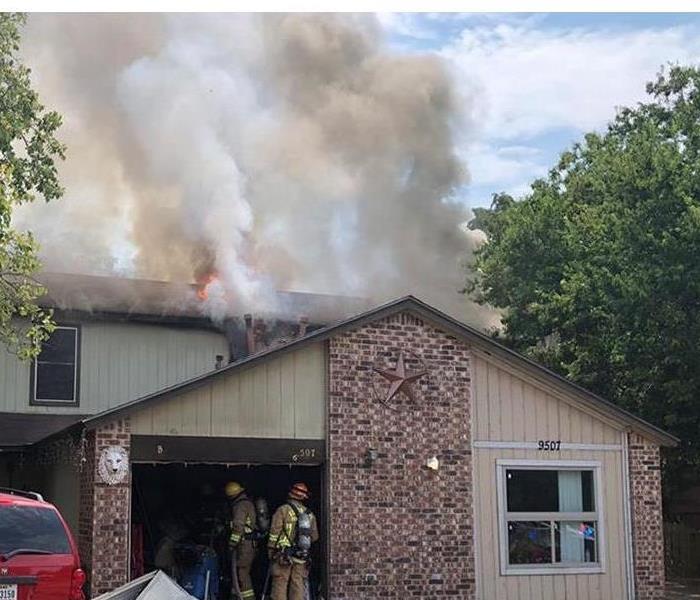 After a fire incident the last thing you want to worry about is cleaning up the tiniest of things. Like phones, earphones, etc.
After a fire incident the last thing you want to worry about is cleaning up the tiniest of things. Like phones, earphones, etc.
SERVPRO of East Honolulu offers premier fire cleaning services, soot and smoke are extremely corrosive and must be combated accordingly. It is important to clean everything that has been in a fire, even if it looks like no inherent damage.
Smoke is acidic, the particulates are suspended within the air causing smoke. There may be little or many components of smoke, depending on the fire cause, fuel sources, and gasses in the air. Some of these compounds are:
- Carbon dioxide
- Carbon monoxide
- Nitrogen oxide
- Volatile organic compounds
- Water vapor
Which is a slew of highly acidic molecules, these molecules will damage surfaces and harm organisms. Especially affecting organisms with lungs and a nervous system. In combination with heat, smoke can be extremely harmful to electronics. The circuit boards within computers, and other electronic innards are sensitive to its environment. Just small overheating from the engine of the electronics itself could cause boards or wires to fry. Thoroughly cleaning all components of an electronic is imperative to your quality of life and your products.
With anything else especially on electronics it creates a thick, black film of smoke that can abrupt the quality of your product. This residue slowly corrodes the metals over time, and also can create malfunctions that inevitably cause your electronics to fail. Leading to short-circuiting, overheating, and electrical fires.
The reason a thin layer of black film occurs is from the soot mixing with the already existing particulates on your electronic goods. Dusts, allergenics, pathogenics, or microbes cling to the soot to create a greasy paste. It is hard to detect the damage within electronics as there are openings, and closings everywhere. It is best left to professionals, like our cleaners here at SERVPRO of East Honolulu.
Our professionals have been taught to handle equipment and understand the materials and mediums they are cleaning. Soot happens to get everywhere after a fire, which is why it leaves a smoky odor on everything. There is no one size fits all to clean goods or your property after a fire. Each item needs to be handled with care as well as disinfected to ensure a safe, clean, environment again. "Like it never even happened." Call us with any questions, comments, or concerns at (808)395-9545.
Cooking with Oil in Eastern Honolulu
11/30/2021 (Permalink)
One of the main reasons as to why house fires are so common are because of cooking practices! Cooking or food fires are the biggest contributor to fires within the home. Even if for a few minutes it is crucial to always keep it in eye view. Just one mistake can cost you your food, or even worse your house.
Keeping a lid nearby is also a safety measure that can be employed if the flame becomes unbearable. Oil flames are harder to subdue and if water is used may cause the fire to jump farther than before. When the flame starts to get unmanageable placing a lid over it maintains control over the flame. After a while one can open that lid and it should be fine after two to four minutes.
A sign that danger might be around the corner is the smoking of the oil. Smoking from the oil means that it is at very high temperatures. Oil does not boil unless at very high temperatures, smoking is the closest indication of how hot oil can be. Whenever you put your food in this kind of oil, oil splash is a very inevitable occurrence. If you do see your oil smoking, then take it off the heat source for 15 minutes. That way the heat of the oil can cool down some before one continues to cook.
Using oil with caution produces amazing results for meals and no hassle to clean up afterwards. It is important to make sure that one is always careful when using oil. Using any kind of oil- whether cooking grade or not- always has a possibility of a fire or even more serious problem.
Here at SERVPRO of East Honolulu, we know how to treat oil fires and damages because of how many we have seen- commercially and residentially. So if these tips falter, we are here 24/7 for any natural emergency on your property. Our technicians are “right behind” the Honolulu Fire and Police Department. Call us with any comments, questions, or concerns at (808)395-9545
Preparing your Kids for Natural Emergencies in Eastern Honolulu
11/15/2021 (Permalink)
Many of us grew up with Sparky the firefly, or the Dalmatian pup that has come out in the last few years- regardless if there is information for children on emergencies that can exist in our community.
On top of learning safety measures at school it is just as important for children to learn safety measures at home as well as a safe fire exit in case of an emergency.
Literature of disasters is imperative for their safety and a smooth transition from the emergency to normality again.
Here are a few things to discuss with your children when talking about emergencies:
- Contact information
- If an emergency happens at the school, in Eastern Honolulu it is usually from heavy rains during the hurricane season, it is important for your children to know who to contact. That means your, a legal guardian, partner, relative..etc name, phone number, and address. Make sure that this is information memorized.
- Meeting Spot
- If the family is separated and there is no way to contact them, designating a secure meeting spot for your family will help in the time of crisis. This is a location where everyone would meet if they were to lose contact before deciding on formalities of where the family is to go.
- Practice makes perfect
- Children much like adults will not get it right the first or maybe second time. The only way for everyone to understand their role and what to do in an event of an emergency is practice, practice, practice. Drilling this information into your children’s head will keep them safe during any natural disaster or event to arise.
- https://www.ready.gov/kids/make-a-plan
- This free to the public tool has various simulations for your child to do and ideas on how to make sure that your child is ready.
As always SERVPRO of East Honolulu cares for our community, especially the little ones. It is our job to make sure they stay safe and sound while disaster strikes.
Additionally, logically sound arguments to children make logically sound adults; let’s create a brighter future with educated children. Call us with any questions, comments, or concerns at (808)395-9545.
How We Clean Smoke Damaged Jewelry in Eastern Honolulu
10/31/2021 (Permalink)
No one likes to clean after a fire takes place, the worst thing about fire damage is the smoke damage that exponentially affects more than the fire itself. Soot and smoke is acidic and corrosive, it is not good on anything especially jewelry.
Our advanced technicians know how to clean any and all goods or materials because we have many IICRC certified individuals. IICRC is the Institute of Cleaning and Restoration Certification; this is a nonprofit organization that works on setting standards for the restoration industry. All SERVPRO franchises use IICRC programs to get certified and it is trusted in the remediation industry. The IICRC continuously works on better techniques and finding more ingenious ways of cleaning for businesses to adopt and lead in the industry.
That being said, there are a few ways for cleaning jewelry after it is affected by a fire- even though it looks like nothing is on goods soot can still be present.
- Dry cleaning- uses microbial dry wipes or also dry sponges that absorb particulates. This is occasionally used for pre-cleaning wet cleaning but only if the case is extreme. If there are particulates flaking off jewelry.
- Wet cleaning- this is the use of towels and cleaning spray, our sprays are always EPA-grade and pet, human friendly. This is when particles are relatively easy to dry and mostly is used when jewelry was in the same area or near the affected damaged area.
- Foam Cleaning- this is a softer treatment that comes from an aerosol canister that dispenses solvent via foam. We exclusively use microbial towels- but for projects that need foam cleaning it is crucial.
- Immersion Cleaning- Uses an ultrasonic cleaner that coagulates dirty molecules, even oxidization regardless of soot issues.
- Immersion cleaning is the best way of cleaning metals, jewelry especially. The cleaner is a big tub of solvent, we leave jewelry in there for a longer amount of time than other things because metal takes a longer time to clean.
We handle precious metals all the time, and can also keep a tally of your goods that you can also keep track of. As always SERVPRO of East Honolulu is here to kokua for our community, commercial, residential- we treat all business the same. Call us with any questions, comments, or concerns at (808)395-9545.
Tips When Grilling in East Honolulu
10/25/2021 (Permalink)
Now that it is not blazing hot with the heat of the summer, and “cooling” down for fall now is the perfect time to grill in eastern Honolulu. Although, it does not get cold here in Oahu- it does cool it with the low 90s and high 80s in the fall. Barbecuing with family friends and ohana is a great pastime that we do in our community. And although these usually call for fun gatherings, an open flame is a safety hazard. It is better to be safe than sorry, especially when celebrating; here are a few tips when grilling this season:
- Make Sure Children and Pets Keep Their Distance
- Ensuring that children and pets are at least three feet away from the grill is imperative to their health respectively. Both do not understand the gravity of an open flame initially, even pets not next to the grill can still cause an accident with the rope that’s holding them.
- Loose Clothing
- Anyone’s loose clothing three feet or closer to the flame is a potential fire starter. Loose fabric or an abundance of it can cause harm and are not always accounted for on a person. When cooking- especially the chef- but anyone around make sure that the loose clothing is tied back and the farthest away from the flame.
- The Grill is in a Safe Location
- The grill or any cooking tool that uses open flame should be at least 10 feet from a building or anything that could potentially burst into flames. Including items outside that happen to be above or below the grill. Make sure that nothing in a radial distance of 10ft is close.
- The Two-Zone Method
- The two zone method was designed to prevent contagious fires that may cause accidents. This is by creating an intangible division in your grill where half of your grill will continuously stay empty and the other half full. This way if a flare-up occurs the food can be safely moved to the other side of the grill. It also improves the quality of your food as it creates a side to sear and another side for slow cooking off a flame.
- A Chimney Starter
- Lighter fuel is most commonly used for igniting flames on the grill. This may not always be the safest option, lighter fuel tends to aggravate the fire already started and burns bigger and brighter when initially dispensed into the fire. A chimney starter lights the coals more evenly and is also safer.
And finally- the most important tip when grilling at your home or anywhere else is to make sure that a fire extinguisher is nearby. Water will be a futile extinguishing agent as it is a grease fire, which would make the flames get even bigger and hotter if contact ensured. If there ever is a flare up that may be uncontrollable, close the lid and wait until it is operative again. And regardless if something happens, SERVPRO of East Honolulu is here. We have seen our fair and share of charcoal burnt houses. Call us with any questions, comments or concerns at (808)395-9545.
Safety Tips in the Event of Fire in East Honolulu
9/30/2021 (Permalink)
Fires do not wait for anybody, as they burn on their own accord.
It is imperative for one’s quality of life to know exactly what to do in the event of a fire. With the varying types of fires that occur any one of them can envelope any and all organic material in a matter of minutes.
Here are a Few Tips:
The most important part is preventative methods, these preventative methods enable a safer passage in the event of flames. When a fire does occur it is usually too thick of a smoke to see and much less breath. Ensuring that your smoke detectors work, and that your fire alarms are running smooth and if is a simple way to keep you safe while a fire happens.
This way there is absolutely the best way you can help yourself while an emergency happens and occurs.
Fire is unmanageable and tends to spiral out of control in a short amount of time, especially on properties because of all the flammable materials that go into making the infrastructure of buildings. Fire in a house can be anywhere from 100 to 600 degrees of Fahrenheit. Which is the reason why it is so important to stay low, staying low exposes you to lower temperatures thereby making it a little safer. It is not uncommon for it to be so hot in the fire that the air scorches your lungs and destroys clothes just due to the near vicinity.
Not only the fire is dangerous but the carbon dioxide in the smoke is equally deadly and if not more so. Smoke can be deadly and disorienting, back in the industrial revolution the main reason for lethargy was due to the smog of carbon dioxide. It is disorienting and can cause asphyxiation which is the medical term for suffocating.
It is important to remember that each fire and smoke situation is so different as fire presents variously with different types of materials and other certain aspects that dictate the grandeur and veracity of the fire.
SERVPRO of East Honolulu strives to educate our community about information on natural disasters. The better informed our community is, the safer it is when emergency natural disasters strike. Call us with any questions, comments, or concerns at (808)395-9545.
The Dangers of Lithium Batteries, and the Simple Tricks to Prevent It.
9/15/2021 (Permalink)
Lithium is more than just a metal that you read about in your freshman chemistry class, it is an excellent conductor that enables many of our common household items today.
The lithium battery, and the lithium-ion battery are conventionally used in almost all refillable battery systems or electronics that charge. Lithium charged cells are known for giving ample energy for a good amount of time, powering conventional tools like alarm clocks, toys, and virtually all remotes.
There are a few differences between lithium batteries and lithium ion batteries. The main being the ability to recharge such lithium-ion batteries. These are secondary cells that have the ability to hold a charge and continuously give charge to the devices in which they enable.
Both store energy releasing it in controlled amounts, which is the reason why lithium charged devices are so appeasing and are literally powering everything. Although, they are used due to the simplicity of their nature; there are health concerns that arise with any kind of electrical conventional tool.
What concerns do Lithium Batteries cause to arise?
There are always concerns when it comes to running electricity, the transference of energy or other moderately risky practices that are now our everyday life.
When you wake up you look at your cell-phone, turn on a light, take a shower, which all use some type of electricity, and thus energy.
Because we used battery fueled tools and mechanisms so frequently it is important to understand some of the innate dangers they possess. The most dangerous health possibility is if a battery short circuits or the overheating of the controlled systems within the batteries; which can also cause short circuiting.
This is especially a concern with lithium batteries as they do tend to overheat from copious common realities.
Such as a hot some day, overheating from outside temperatures and even from overcharging- that still exists and is ever more an issue as we increase the energy intake a electronic can handle. When any exposure to heat incurs this causes the battery to create an equilibrium within its system causing it also to release heat.
This heat can result in internal and external damage to your electronic goods. This has been seen in recent years with the Samsung galaxy phone series and various hoverboards that have since gone viral on the internet.
Which is the reason why you can not check them in your bags when flying, or send them in the mail. They are very dangerous and more sensitive to heat than other traditional metals.
As it follows it is important to maintain the battery system when it comes to lithium batteries. Ensuring that they don’t overheat, whether that is over-use of electronics or the innate temperature outside.
Here in east Honolulu it is especially important for consumers of lithium batteries to be aware of where their electronics are. It is consistently hot throughout the year making your batteries more prone to wear and tear.
Make sure to not leave your lithium powered devices in the car for too long, heat stays trapped in a car. Thus, it is important to make sure one does not expose their goods to this kind of heat for a long duration of time. It is also important to be charging your devices with reliable cables, occasionally some cheaper quality charging cables are hazardous. When they are sourced from reputable companies they tend to decrease the chance of catching your device on fire.
Using lithium ran batteries does not have to be a consistent danger. They are generally safe when used properly, this can be done simply by reading the manuals of devices that contain lithium batteries. But, on the off chance that these batteries do catch on fire- because disasters happen when we are least expecting it. SERVPRO of East Honolulu is here for a peace of mind.
Contingent on fire damage happening due to lithium batteries or for any fire source, call (808)395-9545 right after you call 911, and your insurance. We boast numerous qualified technicians who deserve their job and are consistently praised for a job well done.
SERVPRO of East Honolulu also does commercial and private properties alike, we do not discriminate on jobs. Because natural disasters also do not. And when it is all said and done SERVPRO of East Honolulu will make it "Like it never even happened."
What is a Defensible Space /// East Honolulu
9/15/2021 (Permalink)
Defensible space was the buffer commercial and residential property owners didn’t know they needed! O’ahu is a small island, packed with choke people, choke places, and just choke things compared to other regions of the Hawaiian Isle. Because of this, when fires happen it is terrifying for the whole community, and is even more imperative to the safety of all organisms residing in your home.
Defensible space is the buffer zone between the building, and natural terrain, as well as space in respect to properties. This space was curated by Americans who also deal with high volumes of fires, specifically in the Western regions of the United States. This zone enables safety procedures in a harmless, beneficial way for all walks of life to be safe whilst buildings are on fire. Time is of the essence when your home or property is on fire- as fire manifests and is deadly. There are certain symptoms of fire such as flames, extremely hot near and around the fire, or the embers that accrue from organic material burning. This organic material could be anything or everything on your property, there are very limited resources used to construct buildings that are flame retardant. This defensible space also gives the local authorities room to work with, that complies with safety standards they follow; which equally helps this method.
This space is rooted in the idea of zoning your property, to levels of fire hazardous materials, as well as spacing of said materials. This zone is primarily dealing with the outside space of your property, as well as utilization of flora. The most important principle to keep in mind is flammability, consistently removing objects, or plants that can catch your property on fire is crucial for an accurate defensible space.
Even when building/renovating your properties it is critical that you keep fires, water, and other natural disasters in check. Which comes from smart moves, and being overly prepared.
There is technically a Zone Zero that is 0-5 feet away from your property; it is not frequently touched on but arguably the most important. This zone usually contains doors, openings, porches, decks, lounge areas… etc. Usual objects, tools, or location is one would find near a commercial or residential property. Plants in this zone should always be maintained, and hydrated likewise these plants should be relatively low to the ground. It is important to make sure that all dead organic materials, whether that is mulch, fallen leaves- must be immediately taken care of. One should also keep in mind removing combustible materials from this area, whether that is Cars, RVs, Boats, or fences that will explode in fires. Keeping those kinds of materials away will keep your family, residents, and workers safe in case of an emergency. Furthermore, maybe keeping trash, and recyclable materials away from this zone will also create a healthier environment, that means moving your trash bins at least 5 feet away from your property.
Zone 1 is the most frequented zone and talked about, this zone is defined for its emptiness, as well as cleanliness. This zone is arguably an additional 25 more feet of zone 0. This zone virtually has the same principles but, there are more nuanced applications to Zone 0 such as combustible goods. Zone 1 asks its users to maintain healthy plants, with branches, twigs, within 5 feet of the home. Trees should be maintained, trimmed, as well as be well spaced between other combustible materials no closer than 10 feet. If there are piles of wood or other sources used to create contained fires put these materials in Zone 2. Equally so, ensure that the natural environment is not interacting with your purchased goods, swings should not be near trees. Making sure these two elements of your exterior are well maintained as well as not interacting heavily with one another.
The final zone- Zone 2 is the area that is 30 feet to 100 feet away from the property line. This area does not have rigorous standards and regulations it hoists itself to. Rather this is the part of property that if you have the luxury of having needs to be just maintained. Ensuring there is no infringement of plants on each other is a good thing to keep in mind. This area of the exterior asks decorators to keep a radial of 10 feet of plants to be away from another. It also asks the grass to be kept 4 inches, and fallen debris 3 inches, altogether never over 10. As well as any wood pilings, these pilings should be not taller than 10 feet as well as resting on dirt with no plants near for 6 inches of the perimeter of the pilings.
SERVPRO of East Honolulu is here to serve the community and kokua after disasters. Our job as well as the authorities are a lot easier if safety methodology is already in place. With the ever growing innovations of technology of today, we can only imagine how much safer our lives will continue to become. The Defensible Space method is a tool of prevention that any household or office can practice. Although this method may not be applicable to some of our community members of East Honolulu; there are important tips for outside agricultural practices to keep you and yours safe especially during natural disasters. And if disaster still strikes- as it tends to do- SERVPRO of East Honolulu boasts a team full of technicians who can help every step of the way, until your home looks… "Like it never even happened." Call us with any questions, comments, or concerns at (808) 395-9545
What to Do if You Smell Natural Gas
8/5/2021 (Permalink)
When natural gas leaks occur due to stoves or other appliances it is very important to make sure the problem is solved as quickly and smoothly as possible.
These leaks can’t tend to create a huge fire hazard due to the extreme flammability of the gas. Once you smell the natural gas, which has an odor to be detected. These are three steps to once smelling the fumes, once done contact your local gas company and/or the fire department and keep a safe distance.
- Keep the Lights and other Electrical Equipment Off
When searching for the source of a gas leak, it is very common for gas explosions to occur. Make sure to turn off and keep off all electrical appliances and lights to ensure that sparks do not generate. Use flashlights to find the gas leak and maneuver your way around the stove.
- Finding the Source and Shutting Off the Gas
Occasionally burners on a gas stove or oven turn on and cause a buildup of natural gas within a home or property even if there is no leak. Make sure to continuously check the condition of connections of gas and gas lines leading to other appliances one might use. If a leak is present and or the source of the gas is not evident you can reduce the risk of a gas fire by simply turning off the valve on the gas meter.
- Thoroughly Ventilate the area and Leave Immediately
Even if you turn off the gas valve or gas meter or have simply found the gas leak, the process of ventilation is a necessary step. High concentrations of natural gas can endanger your family and workers. While you are ventilating and airing out the gas it is important to make sure that everyone in the property leaves. That way no one breezes in the toxic fumes, ensuring that the problem is solved.
Here in East Honolulu, the local gas company is Hawaii gas. After notifying the authorities of a natural gas leak, it is important to contact a gas company in order to thoroughly fix the problem. Their number is (808) 535-5900. And if any accident happens which is beyond your control, SERVPRO of East Honolulu is here for any restoration and damage control issues. Our number is (808) 395-9545.
Outdoors Lights in Hawaii Kai
7/28/2021 (Permalink)
Here in the East Honolulu area it is beautiful all year long. Especially during the summer time.
Stay Safe by being Aware of When Your Lights are On
It is common for homes to have outside lighting for entertaining guests or the beautiful Hawaiian view. A home in the Hawaii Kai part of eastern Honolulu caught on fire from their industrial outside lights. Outside lights vary using led lights, bulbs, or traditional Christmas lights; regardless of origin these lights can cause fire damage- harm to your home.
Every minute counts before repairs are made, that is damages get worse when left unchecked. SERVPRO of East Honolulu wants you to have fun this summer season whilst being safe practicing mindful tips of the NFPA.
The NFPA- National Fire Protection Association works hard on researching all year about fires occurring in the United States. Here are some of their recommended practices:
- Make sure to check for damage on any of your electronics and wires before plugging them in. Damaged cords are dangerous, one will save money in the long run buying chords every few years rather than the fire damage from an old one.
- Only use lights and cords that are certified for good quality by a test lab, they will specifically mark its purpose. It is always a healthy practice to double check if your purchased lights are meant to be used outside.
And if disaster ever strikes SERVPRO of East Honolulu is there to help. It may not be an easy feat, dealing with damaged materials and soot. But, we work hard to make the process easier on our customers and their insurance adjusters.
"Like it never even happened." The SERVPRO way
Call us at (808) 395-9545
SERVPRO® of East Honolulu is a locally owned business
Be Careful as to What You Put into Your Microwaves!
6/25/2021 (Permalink)
Over 90% of all American households use microwaves, due to their convenience via modern use of the EMS- electro-magnetic spectrum.
Our beautiful East Honolulu area is no exception from this statistic.
Microwaves also cause 4% of house-fires per year- according to the National Fire Protection Association; conversely other appliances like an oven, stove top, microwave ovens..etc compromise the other 96%.
Equally so, these appliances have numerous built-in safety features designed to minimize electrically caused fires.
Even when one sees sparks in the microwaves they are virtually harmless due to the established mechanisms.
Thus, microwaves are one of the safer appliances in one's home, although there is no guarantee they are 100% accident free.
The simplicity in which microwaves operate rests in the energy waves produced for heating up goods. These sparks are pent up energy waves -microwaves- that bounced off the aluminum walls too much. When these energy waves are generated they coagulate the water molecules resting in the food one is heating up. Consequently this is why putting certain contains, or metal causes fires; there is no water within these molecules: causing the molecules to shake until heat is generated.
Here are a few items that should never go into a microwave:
- PAPER BAGS
- TAKE OUT-CONTAINERS ESPECIALLY ONES THAT ARE CARDBOARD OR STYROFOAM
Styrofoam consists of polystyrene, a type of plastic harmful to the environment and animals alike. When heated it releases smaller chains of plastic which food and the microwave absorbs. These micro-plastics are harmful for consumption. A study came out in 2019 stating globally each person eats about 5 grams of microplastic. Partly because of the heat generated by food in these Styrofoam containers.
It is a good habit to not eat warm/heated foods in these containers all together, due to the composure of polystyrene. Only a slight 20-30 degree change from room temperature can cause the foam to break down actively while you’re still eating take-out.
- ALUMINUM FOIL/METAL GOODS
It may be easy to identify foils, but it is not so easy to recognize if there is metal in other certain household items. An example of this is paper towels, Grandmas all over East Honolulu recommend putting wet paper towels over food one is heating up. For a more even heating process, although this works to get yummy re-heated rice. There are unseen problems with paper towels themselves. Not only are they paper, thus not able to be put in the microwave in the first place; some paper towels have bits of metal woven into the sheets. It is hard to say where these metal particulates come from, but because of the consistent re-occurrence of metal in these goods it is safe to not put them in your appliance at all.
An easy replacement for paper towels are wet face towels made of cotton. Make sure to clean them before use, and designate a certain towel specifically for the microwave. Putting in towels that still have detergent on them are just as dangerous as the metal particulates found in paper towels.
Cookware with metal trimming also can be set ablaze if put into the microwave. Be very careful. Read up on your cooking utensils/pots to see if they are microwavable.
Still an unknown phenomenon, grapes are very combustible for microwaves. They very easily burst and catch a flame. Scientists are still theorizing as to why, some research suggests the water content and size of grapes are the perfect size to be set ablaze.
Plastic containers that say they are microwave safe generally are, but it is a good rule of thumb to not put any plastic containers into the microwave. The plastic industry is severely unregulated, many chemicals that end up inside these containers are not safe to consume. There is evidence to suggest the phytates in these plastic containers are the least scary ingredient.
When there is nothing in your microwave to absorb the energy waves being produced, they continually bounce off the metal walls until a spark is created. This is the surest way of creating a fire hazard within your microwave.
Other lesser known reason for fires in microwaves consists of:
- POWER SUPPLY SHORT
Power supplies are known to burn the wiring components in the microwaves thus shorting your appliance.
- POWER SURGESS
Unregulated power surges in your microwave can also cause fires, microwaves are set up to only hold certain voltages. Too much can over power the machine lessening the safety mechanisms within the machine.
Whether it is a commercial or residential kitchen, learning your appliances- even the least fire prone- can save you money and hassle in the long run.
And if tragedy strikes, SERVPRO of East Honolulu is there to help with the restoration process. "Like it never even happened." Call us for any inquiries about damage from natural causes, or estimates at:
(808) 395-9545
Reasons for Alarm Chirping
6/17/2021 (Permalink)
There are many reasons as to why your fire alarm is beeping here some reasons:
Environmental circumstances
Temperature:
- if the temperature of the room is too high, smoke alarms will go off. Smoke alarms operate within 40° to 95° anything greater than that will make the alarm go off. Carbon monoxide alarms operate within 40° to 100°F as well.
- If the room is too humid, or there is a lot of steam and condensation; that will also make a smoke alarm go off. It is important to make sure that your house or property has a good airflow system. Which can be enabled by opening screen doors, windows, or having an AC unit.
- Although, AC units and fans can help with a good airflow system. If the airflow is in excess right next to your smoke alarm it will also make the smoke alarm go off. Anything within 3 feet of your alarm that regulates airflow can effect the beeping noises and inaccurately set off your smoke detector. Machines that helps with airflow should be removed for your convenience as smoke/carbon monoxide alarms are very sensitive.
Inappropriate battery placement/loosely installed batteries:
- batteries only last up to five years, using old batteries can cause your alarm to beep.
- If the batteries are not properly snapped into place, that can also cause beeping. Since the batteries are easily shaken it is very important to make sure that they are safe and secured within your alarm system. If this is an issue disconnecting and reconnecting the battery a few times will probably fix the beeping
- Loose wires can also cause chirping from units, especially white wires these wires will also notify all units in your house causing an escapade of chirping.
The easiest way to stop incessant beeping is to clean your alarms. Some malfunctions occur due to the dust that settles between the fine lines of your smoking alarm.
Replacing your alarm:
Sometimes smoke detectors alone is just too old, these alarms should be replaced every seven years that is the carbon monoxide and fire/combination alarms. Most alarms have warranty until five years, after that it should be changed. For a simple changing process, make sure to read the data code on the back of your alarm.
Ways to Prevent Lint Fires
6/17/2021 (Permalink)
Fires occurring from dryers are a very preventable accident and usually occur because the dryer has not been cleaned thoroughly nor properly. Although these are very preventable they happen in the thousands each year and injure many people and animals.
More so, due to most placements of washers and dryers they tend to be very costly. Avoiding lint fires means to avoid fire damage altogether in your East Honolulu Home.
The easiest way to avoid a dryer/flint fire is to maintain a clean appliance.
Here are some ways to do so:
- Cleaning the Lint Trap
Every time you use the dryer you should be taking out the lint that is trapped in the lint trap. Although it is a good habit to practice, occasionally there will still be bits and pieces of lint residue. To compensate for these pieces of lint make sure to thoroughly clean the lint trap every two weeks.
This can be done so by gently scrubbing at the metal mesh with dish soap, as well as a thorough rinse. After that it is recommended to dry it before you put it in your appliance again lest you cause a fire.
- Vacuuming the Insides of the Dryer Appliance
Since it is a healthy habit to continuously clean your dryer, it is even more important to clean at the end of the summer and throughout the winter seasons. Although we don’t have much of a winter season due to the slight temperature change it is still an important process.
In order to vacuum the inside of your dryer one should start by unplugging the appliance and removing the panel on the top of the dryer itself.
References to removing the panel come from your personal annual this should be a very simple step. As you vacuum make sure to vacuum all dust and other debris especially if there’s any metal remnants. Avoid contact with any wires.
- Keeping your Exhaust Hose Taunt
Although each person does their laundry differently, the vent and hose itself of the dryer should be cleaned out within 2 to 4 times a year.
This is also a very simple and easy chore that can be done to make sure the dryer never catches on fire. Simply unplug your dryer moving away from the wall, then with your flexible dryer hose clean out all the lint and other debris you see inside. It is a good practice to vacuum and brush out the vent and hose.
Any damages within those pieces should be replaced altogether. When done make sure to extend the hose as much as possible to prevent kinking that keeps debris inside the hose and vent.
Keeping your dryer clean ensures that you can avoid calling us and your local fire department. These tips can also save time and money.
Here are some additional benefits that occur when you continuously have a clean functional dryer:
- It conserve energy, needing less time for your clothes to clean
- Saves money on your electrical bills due to the less energy needed
- Your clothes dry quicker and more efficiently
- The Life Expectancy increases when you maintain your appliance
And if disaster strikes SERVPRO of East Honolulu us here to help, you can call us at (808) 395-9545
Fire Cleanup at the Kaneohe Day Care Center
6/2/2021 (Permalink)
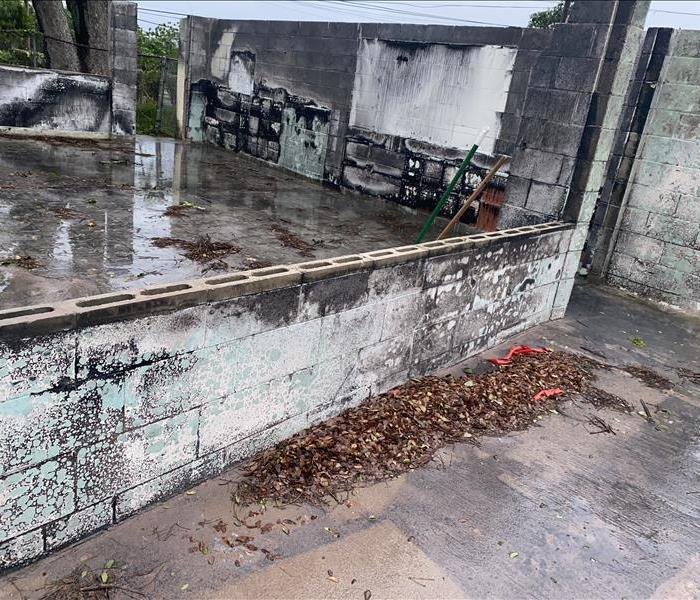 Don't hesitate to call us at (808)395-9545, for any fire or water damage. Choose SERVPRO of East Honolulu, choose quality.
Don't hesitate to call us at (808)395-9545, for any fire or water damage. Choose SERVPRO of East Honolulu, choose quality.
SERVPRO of East Honolulu recently cleaned the remains of an unfortunate fire at a local day care. Thankfully, it occurred after hours damaging 2 rooms, additionally transgressing 2. The cause of the fire was electrical, having extreme damage to the structure of their facility. We removed walls, ceilings, and flooring from the main office room and a classroom.
Because of fire damage, we had to work quickly to start the soot removal process in the other rooms.
The room where the fire happened in, the main office, had the worst damage with a lot of mar and soot on the walls.
Having roomed almost ½ of the sectioned building and all the flooring as it was no longer salvageable. We worked with construction officials as well as restorative businesses to repair the daycare.
During this time we cleaned the aftermath in many creative ways, utilizing our tools, knowledge and occasionally man power. For each of the 4 rooms, they were affected differently and needed specialized niches.
The first room had a generally easy, dirty, cleanup on our part. This room was labor intensive for the construction unit and renovations. Our team first removed all hazardous material, and boxed all the soot damaged items.
All the books needed a dry clean, using a chemical sponge, our technicians had to clean every single page of boxes of books. These chemical sponges are dry, designed to pick up soot, dirty, and occasionally the ink of papers wiped.
Additionally, it needed to be smoked clean with our thermal fogger, and thoroughly cleaned with disinfectant.
All of the rooms needed to be fogged and every surface in the room needed to be cleaned. Whether it was the paper of the children’s paintings, to the yoga mats the toys resided on; all was cleaned through the numerous tools we have.
Including our industrial washer, super sonic cleaner, disinfectant with microfiber cloths, chemical sponges, thermal fogger; and numerous vacuums and brooms.
Soot has an evasive nature accompanied by being innately microscopic, it is truly the invisible killer.
Not only this, soot tends to look harmless but it is very harmful. Which is why this job needed the utmost diligence, as it was a preschool in our community of east Honolulu.
Exactly why for the peace of mind for both you and your insurance alike hire SERVPRO of East Honolulu, water and fire damage require experienced restorative technicians.
Although most schools tend to be built with concrete blocks- that intrinsically is fire retardant, it was painted with lead. Having been built before lead paint was banned by the U.S Government. These blocks can also hold soot, and residuals on the surface.
SERVPRO of East Honolulu is proud to be serving our community and ohanas, we pride ourselves in our job well done. Our cleanup teams are filled with specialists and technicians capable of efficiently whilst quickly making our part get done. So everyone else can do theirs.
We are available 24/7 via phone:
(808)395-9545
Our site:
https://www.SERVPROeasthonolulu.com/
Tell Us How We Helped You:
https://www.yelp.com/biz/SERVPRO-of-east-honolulu-honolulu-2
WHY A PROFESSIONAL RESTORATION COMPANY IS THE ONLY WAY TO GO AFTER A DISASTER
5/14/2021 (Permalink)
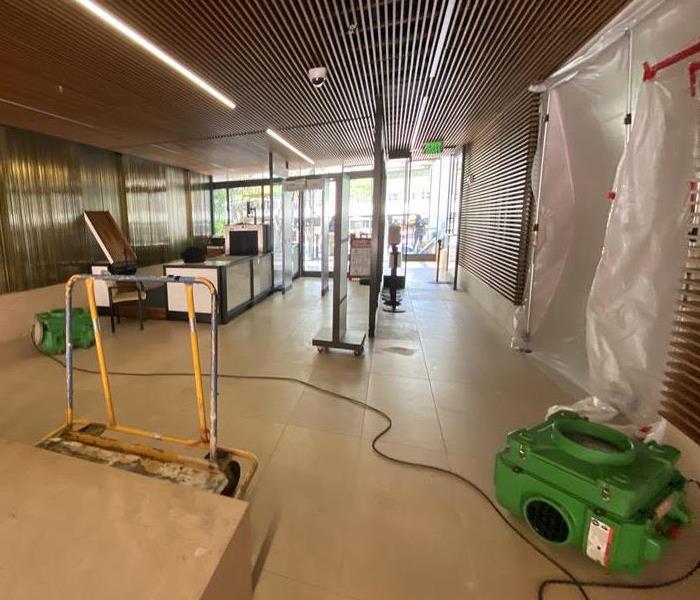 If you have been affected by a disaster, call a professional today to get your home/business restored quickly at SERVPRO of East Honolulu 808-395-9545
If you have been affected by a disaster, call a professional today to get your home/business restored quickly at SERVPRO of East Honolulu 808-395-9545
When a storm, fire, or any other type of disaster strikes your home/business, the aftermath can be devastating. It’s hard to know what to do and where to begin picking up the pieces. If there is significant damage to your home/business, the thought of the cleanup process can be overwhelming. There are many factors that need to be considered and many hidden dangers that can get worse if not handled properly. Here are the reasons why it’s best to hire a professional restoration company after a disaster has struck your home.
SMOKE AND FIRE DAMAGE
On the surface, smoke damage doesn’t seem that bad. Smoke particles are very fine and have a knack for settling into the small crack and crevices. If not removed, the burnt smell can linger for a long period of time, and in some cases permanently.
FLOOD DAMAGE
Floods can cause extensive damage. A professional restoration company is able to accurately assess the damage and create the most efficient mitigation plan. Quickly addressing water damage greatly reduces secondary damage from occurring.
Mold is silent and oftentimes rears its ugly head after flooding. Every inch of the flooded area must be properly dried and sanitized so that mold is not allowed to prosper.
SAFETY
Whether you have experienced damage from fire, flood, or another natural disaster, safety should always be the number one concern. If you have not had a professional assess the damage to your home, there could be a ticking time bomb just waiting to cause havoc in your home.
Having your home damaged by a natural disaster or a fire is upsetting and stressful enough. It can be hard to think of spending money on repairs and restoration when you think that you may be able to do it yourself. However, the money should be considered an investment. You are investing in the health and safety of yourself and your family, the structural integrity of your home/business, and the contents within. If you have been affected by a disaster, call a professional today to get your home/business restored quickly at SERVPRO of East Honolulu 808-395-9545
Reduce Your Risk of a Fire Every Time You Fire Up the Grill | SERVPRO® of East Honolulu
3/1/2021 (Permalink)
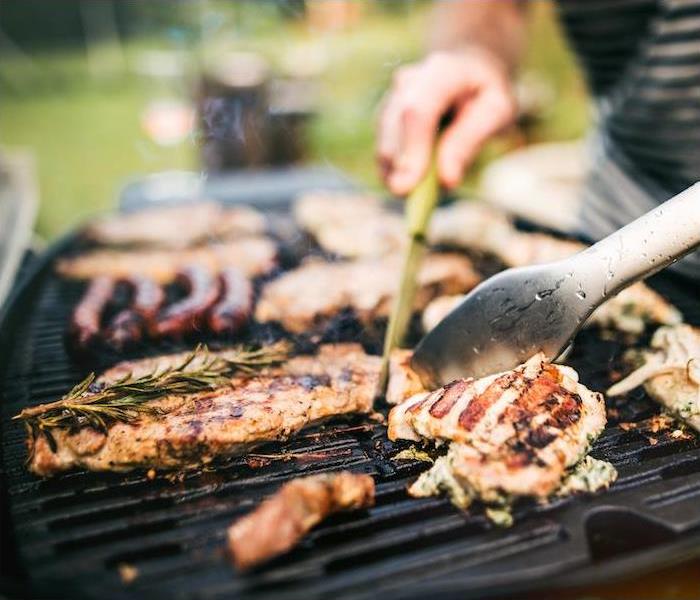 If you have a grill fire that does damage to your home, we are here to help. You can call us any time 24/7 808-395-9545
If you have a grill fire that does damage to your home, we are here to help. You can call us any time 24/7 808-395-9545
One of the most enjoyable things about our gorgeous weather is having ample opportunity to make use of your outdoor space and cook your favorite meals on the grill—but it is important to remember your fire safety skills every time you do. Any time an open flame is introduced, it is wise to be vigilant about preventing fires, even if you have grilled many times before.
The U.S. Fire Administration estimates that over 5,500 fires are a result of accidents with backyard grills every year, leading to property damages in the millions. With these grilling safety tips, you can significantly reduce your chances of ever being included in this statistic.
Grilling Safety Tips to Prevent FiresCreate a safe zone around your grill. You want your grill to be centrally located so you have access to everything you need and are not removed from the fun, but it is important to not be too close to any flammable materials. A three-foot buffer free of pets, children and flammable items around the grill is recommended so that if a flare-up does occur, there is nothing for it to damage nearby.
Clean your grill grates often. The bits of stuck-on food on your grill grates do more than just make the cooking temperatures inconsistent—they can actually lead to a fire that quickly becomes out of control. Grease and other crumbs can ignite if they get hot enough, leading to a sudden flare-up. The good news is that a simple brush after each use of your grill can go a long way in preventing this.
Never leave the grill unattended. Just like you would never walk away from a pot on the stove, you should never turn your back on your grill. Even with the lid closed, it is possible that a fire starts and quickly becomes out of hand, so always keep an eye out and make sure you have a fire extinguisher handy.
Inspect the grill regularly. Because the gas connectors on a propane tank are typically hidden away, it can be easy to forget to take a look at them—but gas leaks can cause serious fires, so you should give them a once-over every time. The connection points and hoses can all fail with age, so a quick check can go a long way to prevent fires.
If you have a grill fire that does damage to your home, we are here to help. You can call us any time, day or night, to have a quick response from our restoration experts.
General Fire Insurance Coverages
2/23/2021 (Permalink)
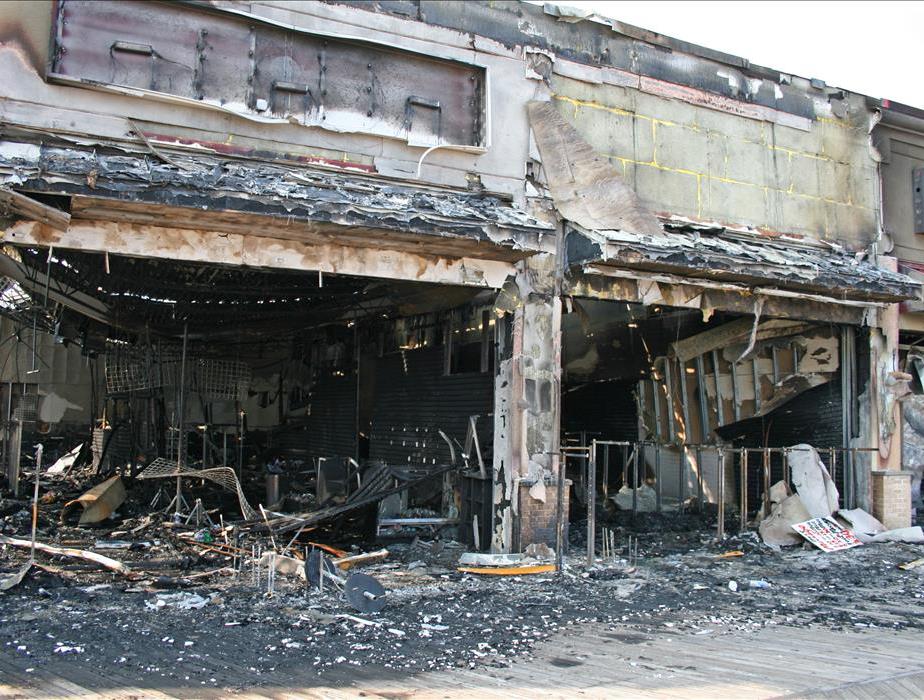 Fire damage and the process of restoration can be a tiring and frustrating experience, understanding your insurance makes the process easier.
Fire damage and the process of restoration can be a tiring and frustrating experience, understanding your insurance makes the process easier.
Tragedy can hit anyone, whether that is in your home or family owned business; especially fires. When tragedy strikes though, one first calls their insurance company. While most companies vary from policy to policy there tends to be a typical guidelines regarding coverage.
Here are the Standard Coverages offered in general insurance companies policies, there are varying coverages for the different types of severities in which fire affects your property:
The special coverage is for the most damaging and expensive types of fire damage, which excludes what they are not willing to cover. Anything deemed part of the agreed areas they previously established will be covered under this certain coverage
The broad coverage includes policy that covers fire expenses and additional issues that come with fire damages. Such as external secondary damages: water or chemical damage from exterminating the fire itself.
The basic coverage is the most minimal in nature, only covering policy explicitly stated from fire damage.
Evaluation of Damage
When a fire occurs the first thing an insurance company will do to assess the damage is sending out an insurance adjuster to scope the damage found on the property. This person generally verifies and conforms the damage and what the insurance companies define the fire to fall under coverage wise. The only fire damage that will not be covered by any insurance company is arson. Most of the damage will be documented, issues like burnt structures, wood damage, tile damage, or water sprinklers. Ironically most fires have more water damage than fire, because of the excess amount of water exerted in certain areas the damage tends to be amplified.
Treatment
Usually here at SERVPRO of East Honolulu this is where we come in, collaborating with your insurance company and contractors to get the job done. Our job as the restoration company is to rebuild your property to its former state, "Like it never even happened." Although this is our job, it is a heavy collaboration of property owners, the insurance company, contractors, and us.
Prevention
Fires are very expensive as they truly destroy organic materials that exist in the structural component of buildings. It is much more economically efficient to be prepared by fire safety. Fire safety can look like numerous preparational activities such as planning or keeping preventative measures like fire extinguishers. Written plans and basic training can help aid in insurance coverage in minor damage as well as major damage. Most insurance companies look rather favorably on efficient and prepared fire plans and the action taken at hand occasionally adjusting the coverage they are offering.
Your home and business relies on good insurance coverage and proactive preventative measures to stop fire damage and decreases financial harm. It is imperative to understand your particular insurance company’s policies and the coverage you have. We are here to make this process as simple and as easy as possible, because it is easier to temporarily close for repairs than an official close.
Fire Extinguisher 101
2/15/2021 (Permalink)
 We are here for all your fire damage needs, call SERVPRO of East Honolulu at (808) 395- 9545 anytime anywhere.
We are here for all your fire damage needs, call SERVPRO of East Honolulu at (808) 395- 9545 anytime anywhere.
It is important to note that there are many different types of fire extinguishes and flame-retardant materials. Knowing which type of extinguisher you need for your property can lead to a efficient plan, less material damage, and an assurance that it will extinguish your fire.
There are many variables to take into account when planning for your property's fire extinguisher.
- Products/materials that are flammable
- Materials that catch on fire or aide in creating a fire
- Where your heat sources are located in comparison to flammable goods
- A viable fire exit and plan, placement is crucial for extinguishing a fire quickly
What is a Fire?
Creating a fire is a chemical reaction and goes as follows:
- There needs to be a fuel source, a combustible gas, liquid, or solid that can get hot enough for a spark.
- Oxygen, this will react to the fuel source
- Heat Source, a heat source is imperative to "ignite" or start the chemical reaction. In this aspect it one can treat fire as if it is a chemical itself.
Classifying Fires:
There is no fire extinguisher that will stop all fires, even water can be hazardous to different types of fires. Understanding what will be the most effective in one's most probable cause of fire will create a safe environment.
- There are 4 different types of fires
- Class A
- Common combustibles, like paper or wood.
- Class B
- Combustible liquids, like kerosene or gasoline.
- Class C
- Electrical faulty, like wires or outlets faltering.
- Class D
- Combustible metals, like magnesium or potassium
- Class K
- Oil and fats, like vegetable oil and animal fat (most commonly pig fat).
Different Type of Fire Extinguishers:
Due to extreme variance of fire starting, there are multiple ways to stop fire. The easiest way to extinguish is to take away at least one of the three needs for a fire aforementioned.
- Dry Chemical
- This can be used for classes A,B, and C
- This is a powder substance, usually Sodium Bicarbonate, that one can spray on to a fire. This "smothers" the fire and stops it from receiving oxygen.
- Carbon Dioxide
- Best used for classes B and C
- It works by eliminating the oxygen in the air, and replacing it with carbon dioxide, which in return stops the fire access to oxygen.
- Water
- Best used for class A but can be used for B and C
- This is the easiest way to stop both a heat source and suffocating the fire. Although it is harder to store.
- Wet Chemical
- Can be used for all the classes except C
- Using a chemical like potassium in a foam like substance which instantly coolers the surface and smothers the surface. It can corrode metal surfaces and can be very toxic to living organisms.
Inspect your Fire Extinguishers Annually:
The USFA suggests these steps to ensure the proper care of your fire extinguisher, as each one can expire or be unintentionally released as a gas or liquid.
1. Ensure easy access.
2. Check the pressure, make sure the pressure gauge indicates the proper pressure.
3. Look for physical damage as this may be an indication that the extinguisher is not in usable condition.
4. Clean the extinguisher, check if there is dust or grease around the extinguisher. As the extinguisher can react to its surroundings. Note: potassium is highly reactive and corrodes easily so it is important to consistently check up on wet chemical extinguishers.
Fire, What's the Next Steps?
12/1/2020 (Permalink)
Fire damage cleanup and restoration are some of the many services we offer here at SERVPRO of East Honolulu.
We know how stressful fire damage can be, and after the fire men are gone we'll be here to clean up the soot and fire damages! Our teams consists of IIRC certified individuals who can assess and properly clean your damaged goods. We can ensure that there are no lingering soot particles or odor, these particles don't get addressed using tried-and-true expert techniques, there is the potential to spread throughout the home. This odor is unpleasant and can be a reminder of the fire.
So, what do we do to fight smoke odors?
When our skilled technicians get called to help with fire damage in East Honolulu, we pay close attention to the entire job. This means assessing the full scope of your loss, including any areas where soot particles and smoke residue settled. Even the smallest bit of residue left behind can cause odors to sprout up weeks or months down the road. This is why we have a series of carefully planned steps we take to execute a full restoration on your property.
What's our fire process?
Once you call us for fire restoration services, a fully equipped crew arrives at your property in as little as 4 hours or less. Our crew chief begins the assessment so that a detailed plan of action can get put into place. Addressing a fire loss with heavy smoke damage includes:
Once your interior is deemed safe to enter, and the plan is formulated, we work to remove items that are too charred to salvage. This helps us to limit the amount of soot spread from one location to another while also lessening odors throughout the interior. Our technicians test the smoke residue, which allows us to select cleaning agents carefully. This ensures more efficient cleaning as well as cuts back on the potential for damage using incorrect cleaning measures.
We see two main types of smoke damage after a fire loss. Dry smoke requires careful cleaning because wet cleaning agents might drive the residue further into the surfaces. We take our time, using care to lift the dry smoke using sponges and soft cloths. With wet smoke, it often binds to surfaces. This calls for solvent-based cleaners to lift it for removal safely. The initial testing done helps ensure no marring happens on any surfaces.
There will be items within your home covered in soot and smoke residue. We handle all of these items on a case by case basis, using a variety of methods to suit each item. Non-porous items can be cleaned using our specialized immersion method. This is when items get immersed in a cleaning solution that helps carefully remove the residue, restoring it to like-new condition. Fabric items and upholstery get tested to ensure no damage comes to the materials, with our technicians often using soft bristle brushes to remove particles.
Here's some reasons you should trust SERVPRO of East Honolulu
Regardless of the nature or scope of the blaze, we have the cleaning technicians equipped to handle the job. Our team is fully accredited in both Odor Control (OCT) and Fire and Smoke Restoration (FSRT). Just a sampling of the tasks we cover throughout the restoration process includes:
- Debris removal
- Pack out services
- Dry vacuuming
- Surface cleaning
- Moisture detection
- Soot removal
- Controlled demolition
We Make Sure No Foul Odors Linger
For any fire damage call, addressing odors is paramount. Deodorization is a critical element of the process, no matter the severity or size of the fire loss. Burning odors and smoke can intensify without professional mitigation such as removal of charred debris and surface cleaning. Our skilled technicians remove all of the noxious odors and neutralize them with a variety of advanced equipment, such as:
- Thermal Fogging Equipment: These are units that heat up a deodorizing compound to put a fine mist on surfaces. This compound penetrates the porous materials to trap the odors in both your contents and structural materials.
- Hydroxyl Generators: These units utilize UV cleaning to help neutralize odors across an open area. The equipment features a HEPA filtration system that works to cut back on harmful particulates in the air.
When Will My Home Be Ready?
Our team does everything we can to provide you with a working timeline of the project from start to finish. The crew works according to a plan that helps us to maintain efficiency without leaving anything unattended to. The job is wrapped up with a full cleaning and deodorization to ensure everything is sanitized and safe for your family to enjoy. We make it, “Like it never even happened.”
Candle Free Alternatives
11/6/2020 (Permalink)
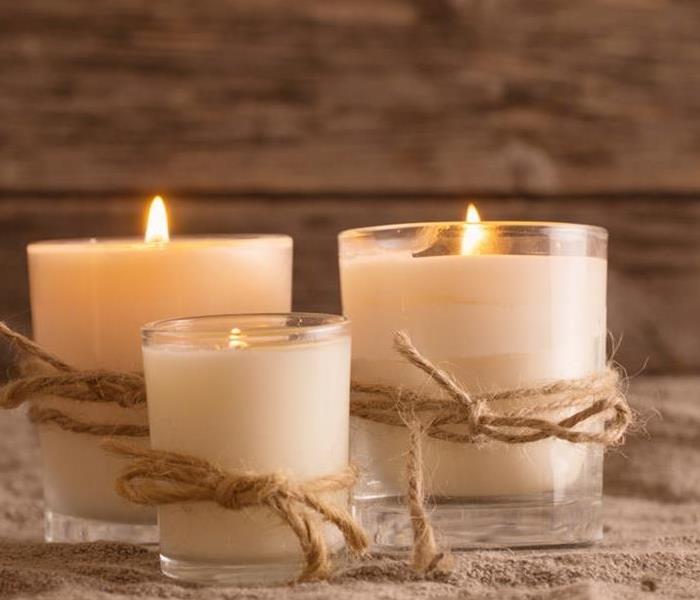 If you are thinking about using alternatives other than candles this holiday, you probably should. Here are 5 different alternatives!
If you are thinking about using alternatives other than candles this holiday, you probably should. Here are 5 different alternatives!
Aloha supporters of SERVPRO of East Honolulu,
We would like to extend a huge mahalo to everyone who reads our blogs and also request our services. We are happy to serve East Honolulu and share these tips with you.
As we are in peak holiday season the use of candles has risen, with candles being used as decorum or mood setters for this time of year.
It is also important to note, the use of candles do not equate to fire starting.
The issue with an increased use of candles is the increased use of negligence with respects to candles themselves. While many of us don't practice proper fire etiquette to sustain a candle flame; here are some great alternatives for a fire-free holiday.
1. Fairy Lights
Because they are usually battery-run or with electricity, these are great alternatives to candles especially if you're just using a candle for mood setting. It will out live a candle, while also being a great way to even spice up one's light theme. With many different types of Fairy Lights some are even 10+ colors.
2. Wax Warmers
If you like candles for the warm scent they bring, wax warmers are a great alternative. Bringing in new aromas in a more controlled setting; they also either use electricity and have no open flame.
3. Essential Oil Diffuser
Essential oils create added scent to a room, with some good health benefits. There are many different diffusers to choose from, so you can easily find one that matches your home. Beware of oil diffusers if you have pets, as some can not handle essential oils nor diffusers creating adverse effects to certain pets.
4. Stick Diffuser
These are both easy and care-free, these simply add scent from the scented oil the sticks reside in. Being a simple gesture to a great-smelling holiday season.
5. Battery-Powered Candles
The easiest change from open-flame candles to safer alternatives is to a battery-powered candle.
Be safe over the holidays, everyone at SERVPRO of East Honolulu wish you the happiest of holidays.
We are here 24/7 365 days of the week, call for any emergencies:
(808) 395-9545
Be Sure Your Staff Knows What to Do in Case of a Fire | SERVPRO® of East Honolulu
8/7/2020 (Permalink)
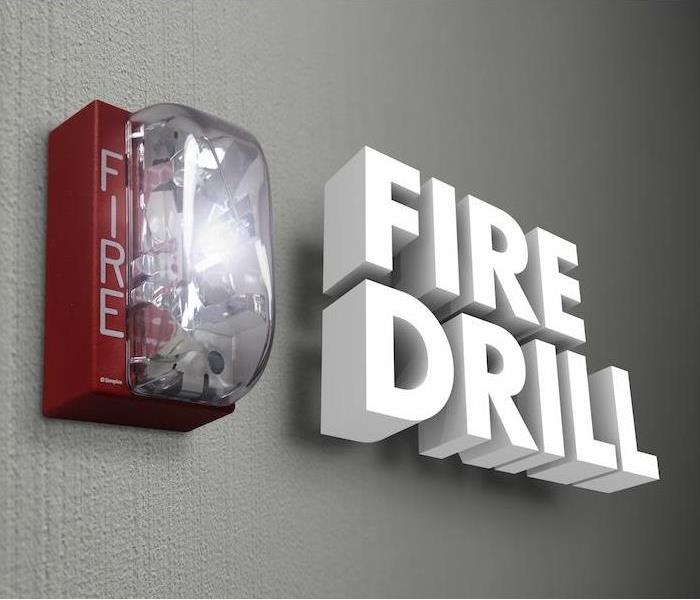 If your business has experienced fire damage, you can count on us. We specialize in commercial fire restoration and will be here for you 24/7
If your business has experienced fire damage, you can count on us. We specialize in commercial fire restoration and will be here for you 24/7
Making boosts to your business’ safety efforts is a great way to ensure you are not surprised by any emergencies and that you are keeping your staff as safe as possible. Fires at businesses happen quite frequently, so anything you can do to plan ahead and reduce your risk is wise.
Being able to get your staff evacuated quickly from a fire is the most important component to plan for so you can be certain you are doing your best to keep everyone safe. Having a plan in place for fire drills is a great way to ensure everyone knows exactly how to react if one starts.
Have a Plan in Place for Workplace Fire DrillsConsult with your local fire officials. Fire officials are an amazing resource when it comes to planning out your fire safety efforts, so definitely get in touch with them and gain their insight into your fire drill strategy. They can often come by and help you identify evacuation routes and other special considerations that might impact your fire drills.
Communicate and mark fire evacuation routes. After mapping out your fire drills, mark them clearly so that they are easy to identify even in a stressful situation. Inform your staff of your fire safety plans, and let them know when and what to expect from your upcoming exercise so they can be prepared.
Have fire drills frequently. The main goal of a fire drill is to help everyone understand exactly what to do and go through the motions so that they are prepared in case a real fire starts. Frequently go through the processes with your staff and host drills at least once each quarter so everyone has a chance to rehearse.
Run different fire scenarios. There are a number of places that a fire could start—the office kitchen is the most likely place, but electrical malfunctions or other incidents could lead to a fire in other areas of the building. Make sure you plan for different scenarios and alter your drills each time so that everyone can prepare for the most amount of situations possible.
If your business has experienced fire damage, you can count on us. We specialize in commercial fire restoration and will be here for you at any hour—contact us today.
Get Your Grilling On!
7/1/2020 (Permalink)
Here in Hawai'i it is not uncommon to see smoke coming from the barbeque or grillers every weekend. And here at SERVPRO of East Honolulu we are all for it! (We even have a few prolific chefs on our team)
July is actually the peak of grilling fires! There is an 18% increased risk of a grill fire, because of the increased usage of them especially in time for Fourth of July !
But, like most open fires grilling or "BBQ-ing" can present as a fire danger. Here are some tips to make sure that your summer runs smoothly, and your grilling is even better!
In the fires from grills, more than 1/4 of the fires accounted for are due to an unclean grill. Many people don't think to clean the grill but it is imperative to a safe grill "sesh".
When you don't clean a grill after you use, there could be over cooked particles still on the grill. This makes it easier for it to catch on fire.
Home depot has awesome videos on cleaning your grill while also keeping the charring flavor! There are also multiple cleaning products that do the same thing.
Make sure that you only use your grill outside and in an open area, this may seem redundant but the lack of these measures facilitates most grill fires. Make sure that your porch or balcony is clear of items that are flammable.
Also when you are cooking on these types of outdoor areas ALWAYS watch the fire. Many of the fires are caused because of the grill structure catching on fire, in return catching the porch or balcony on fire.
Make sure that your gas grill is functioning properly, many of the grill fires were due to leaks and breaks inside of a gas grill. Although, gas grill give a nice burn they can also have serve repercussions if not used correctly.
Although other grills including charcoals cover a menial amount of fires in comparison to gas grills there is still an increased risk with them. Make sure you know the ins and outs of your grill so you can have a fun and safe time grilling!
But, just in case disaster still strikes, we are always on call. To clean the fire damage and make sure that it looks like nothing even happened.
24/7
for you convenience,
for your safety,
and for a piece of mind.
Helpful Guidelines for House Fire Recovery | SERVPRO® of East Honolulu
6/19/2020 (Permalink)
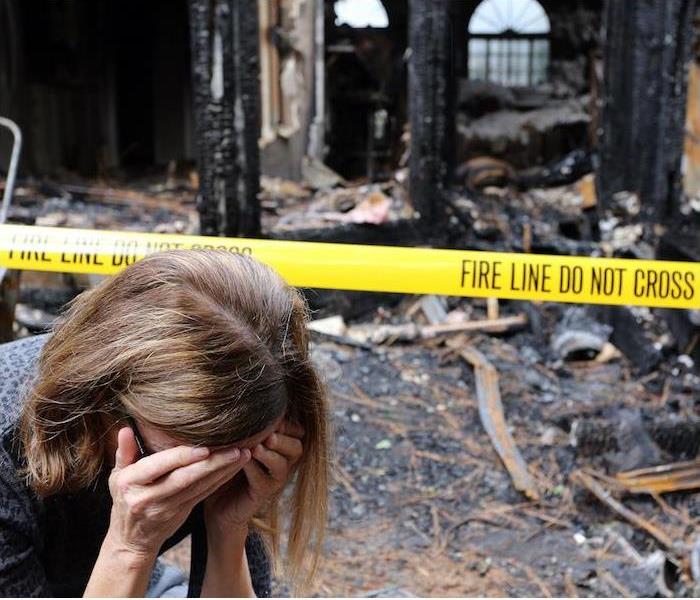 If your home is damaged in a house fire, you can count on us to help you. Get in touch at any hour for a quick response 808-395-9545
If your home is damaged in a house fire, you can count on us to help you. Get in touch at any hour for a quick response 808-395-9545
If you have experienced a fire in your home, it is normal to experience a variety of emotions regarding the trauma of the event and the process of recovery. Reestablishing normalcy after a fire is a long process, but by making sure you are following a few guidelines, you can make the process less stressful on your household.
Here are some of our most helpful tips for the aftermath of a fire.
Helpful Tips for the Aftermath of a Fire
Prepare yourself for what to expect. While the damage done to a home does depend on the size and severity of a fire, even small fires can cause far more damage than people may realize. Between charring, far-reaching smoke and soot, and the possibility of moisture damage as well, it can be alarming to see your home in such disarray. Preparing yourself mentally is an important aspect of lessening the shock and stress that comes with a house fire.
Wait to enter your home. While the damage you can see can be overwhelming, the damage you can’t see can pose severe risk of injury to anyone in the home. Be sure to check with firefighters before reentering the building—even if the fire is extinguished, there can still be lurking dangers that officials will need to address before letting people back in.
Contact your insurance company. Homeowners’ insurance policies vary wildly regarding coverage, as well as the process of filing a claim. It is important to get in touch with your insurance provider early on to get an overview of the process so you can follow the right steps regarding filing and maximizing your claim.
Document the damages. Though dealing with the details regarding damaged belongings is unpleasant, documenting everything thoroughly will be helpful to you and to your insurance company as you file a claim. Make an inventory list of everything that has been impacted by the fire and be sure to take plenty of photos as well.
Contact your restoration company. Experiencing a house fire is a traumatic event for the whole family, which is why recovery is so important. Having a restoration company that you can count on is an important aspect of this—the company you work with should help you simplify the process instead of making it more complicated.
If your home is damaged in a house fire, you can count on us to help you. Get in touch at any hour for a quick response.
Be Sure Your Staff Knows What to Do in Case of a Fire | SERVPRO® of East Honolulu
6/19/2020 (Permalink)
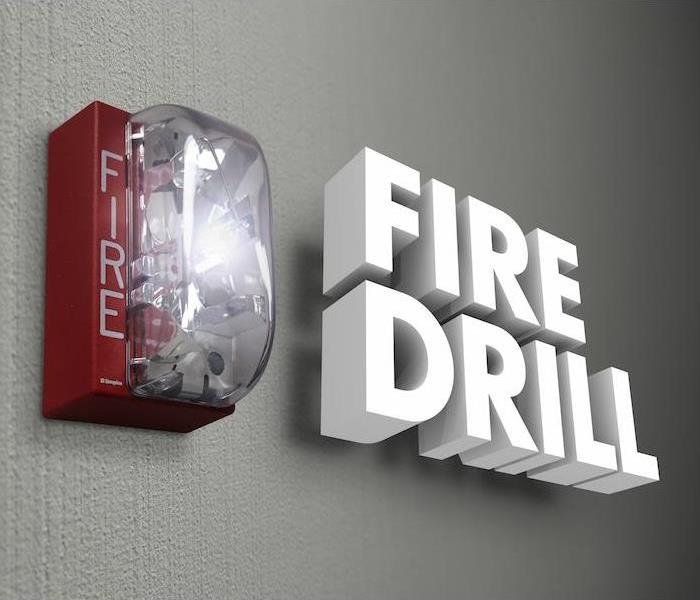 We specialize in commercial fire restoration and will be here for you at any hour—contact us today 808-395-9545.
We specialize in commercial fire restoration and will be here for you at any hour—contact us today 808-395-9545.
Making boosts to your business’ safety efforts is a great way to ensure you are not surprised by any emergencies and that you are keeping your staff as safe as possible. Fires at businesses happen quite frequently, so anything you can do to plan ahead and reduce your risk is wise.
Being able to get your staff evacuated quickly from a fire is the most important component to plan for so you can be certain you are doing your best to keep everyone safe. Having a plan in place for fire drills is a great way to ensure everyone knows exactly how to react if one starts.
Have a Plan in Place for Workplace Fire Drills
Consult with your local fire officials. Fire officials are an amazing resource when it comes to planning out your fire safety efforts, so definitely get in touch with them and gain their insight into your fire drill strategy. They can often come by and help you identify evacuation routes and other special considerations that might impact your fire drills.
Communicate and mark fire evacuation routes. After mapping out your fire drills, mark them clearly so that they are easy to identify even in a stressful situation. Inform your staff of your fire safety plans, and let them know when and what to expect from your upcoming exercise so they can be prepared.
Have fire drills frequently. The main goal of a fire drill is to help everyone understand exactly what to do and go through the motions so that they are prepared in case a real fire starts. Frequently go through the processes with your staff and host drills at least once each quarter so everyone has a chance to rehearse.
Run different fire scenarios. There are a number of places that a fire could start—the office kitchen is the most likely place, but electrical malfunctions or other incidents could lead to a fire in other areas of the building. Make sure you plan for different scenarios and alter your drills each time so that everyone can prepare for the most amount of situations possible.
If your business has experienced fire damage, you can count on us. We specialize in commercial fire restoration and will be here for you at any hour—contact us today.
Fire Can Cause Water Damage
6/18/2020 (Permalink)
SERVPRO of East Honolulu can help with water damage caused originally from a fire.
In some fires, damage from the actual flames ends up being the least of your concerns. Fires often trigger damage in a way homeowners do not expect: significant water damage. Whether during the efforts to put the fire out or leaks caused by the heat, fire can directly or indirectly cause your home to take on large amounts of water unexpectedly. If the fire started during a storm, rain or flood water might also deal some damage. Listed are some common ways we encounter water damage after a fire.
- Hoses and Extinguishers: Care is not often taken to controlling the water flow, with as much being used as necessary to stop the flames. This can lead to a heavy dousing of any surface in your home and some mild flooding as a result of fire hoses. Excess water is common after a fire, and perhaps more often than not you'll be dealing with this type of damage.
- Bursting/Leaking Water Pipes: Fire can melt and break metal faucets and plumbing due to its extreme temperature, causing profuse leaks and ruptures wherever it crosses a water fixture. Although these do not often release enormous amounts of water, they can cause considerable damage to floors and walls in their vicinity.
- Storm Damage: Fires can start as the result of a storm, from a lightning strike or otherwise. The fire may work in tandem with torrential rains, as these are often not enough to put out the blaze but enough to pour through any burned openings into your house
SERVPRO of East Honolulu is a locally owned and operated business that has experience with all sorts of water and fire damage, often at the same time. Should you require emergency restoration services following a disaster, call us 24/7: We're Faster To Any Size Disaster.
STOP, DROP, and ROLL, a 2020 for fire prevention
6/15/2020 (Permalink)
Growing up in Hawaii we all know Sparky, the fire department's mascot to teach our keiki how to handle and prevent fire. He always emphasized Stop, Drop, and Roll--this is to prevent any type of bodily harm when you are on fire. But how to we prevent fires from starting?
Avoiding careless open fires, this could be an unattended stove or candle. Regardless of size if a open flame is unattended it can cause havoc for everybody. Make sure to keep an eye on any flame in your business or household to prevent a fire.
Do not disable smoke alarms, smoke alarms are crucial for fire prevention. These alarms go off when they detect a heavy amount of smoke in the air then create extreme noise, this can wake one up to the danger of smoke or a nearby fire. This has saved so many lives, and it can save yours too if there is ever a fire.
Try not to smoke inside, besides the adverse health effects of smoking on you and those around you, smoking inside can lead to a fire inside your business area or household.
Practice safe habits, teach your family or employees what your specific fire plan is. Where is your exit? Do you have a fire extinguisher accessible to everyone? Does everyone know where the gas and power shut offs are? And so many more questions, when everyone is prepared it is a safe environment.
Using electrical safety, one of the easiest fire prevention methods is practicing electrical safety. This is not overloading your sockets and learning your electronics. Heavy electronics every year lead to fire because the lack of knowledge on these electronics. Familiarize yourself and know your electrical limits for the best type of fire prevention in the workplace.
Regular Maintenance, make sure that your household or business is always in tip top shape. It is better to be over-prepared than under-prepared. At SERVPRO of East Honolulu we have seen fire damage and its aftermath. We don't wish this upon anyone, using regular maintenance will keep your equipment up to date and your employees or family feeling safer.
A Reference Guide for Fire Safety Tips
2/1/2020 (Permalink)
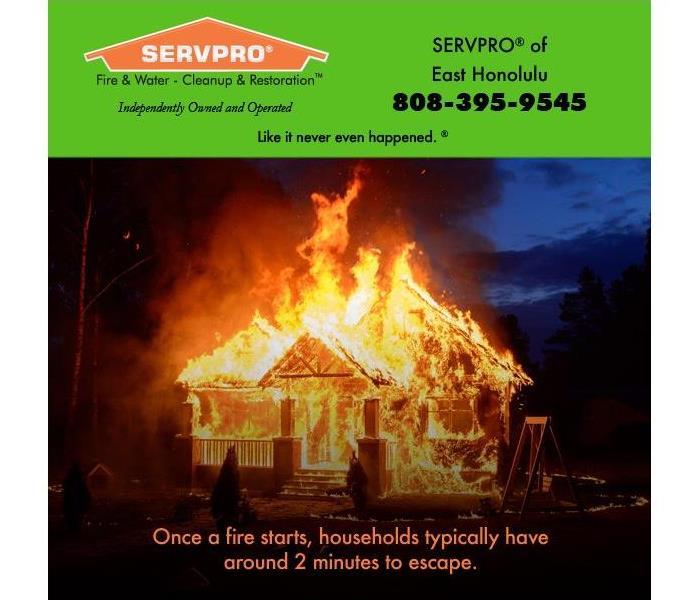 Being able to escape quickly is much easier with a fire evacuation plan.
Being able to escape quickly is much easier with a fire evacuation plan.
House fires are a leading concern amongst homeowners, and considering how frequently they occur, this concern is a valid one. House fires can quickly get out of hand and cause damage to property, belongings and livelihood.
Because house fires are such a universal worry, there is a plethora of information about how to prevent them and protect yourself. To make these safety tips easier to find, we have compiled a quick reference guide that has all the most pertinent house fire tips you should note.
Fire Safety Tips for Your ReferenceFrequently Check Smoke Detectors. Smoke alarms are recommended again and again as the top measure for fire safety. Install them in every room of the house, check them every 30 days and consider getting a model that utilizes an interconnected alarm system for peak effectiveness.
Have a Fire Escape Plan. Designing a fire escape plan that is customized to your home is the best way to ensure you will be able to escape once a fire begins. It is advised to have two exits out of each room and to designate a meeting place outside of the home for everyone to go to.
Know How to Operate a Fire Extinguisher. There are several different types of fire extinguishers that can be purchased, so it is important to select the model most pertinent to your needs and be aware of how to operate it.
Never Leave Flames Unattended. Open flames are a part of everyday life, but it is important to not minimize the risk they pose just because they are common. Whether using fire for cooking, heating or candle-lighting, never leave a flame unattended and always be cautious that it does not spread.
Keep a Closed-Door Policy. It is not uncommon for fires to start in the middle of the night, so taking precautions in your nighttime routine is recommended. Shutting bedroom doors at night can significantly slow a fire’s spread, allowing everyone to have an extended reaction time and execute the escape plan.
If you’d like to learn more about protecting yourself from a house fire and how our restoration services can help you recover, get in touch today to learn more.
How Fires Peak in the Winter | SERVPRO® of East Honolulu
12/14/2019 (Permalink)
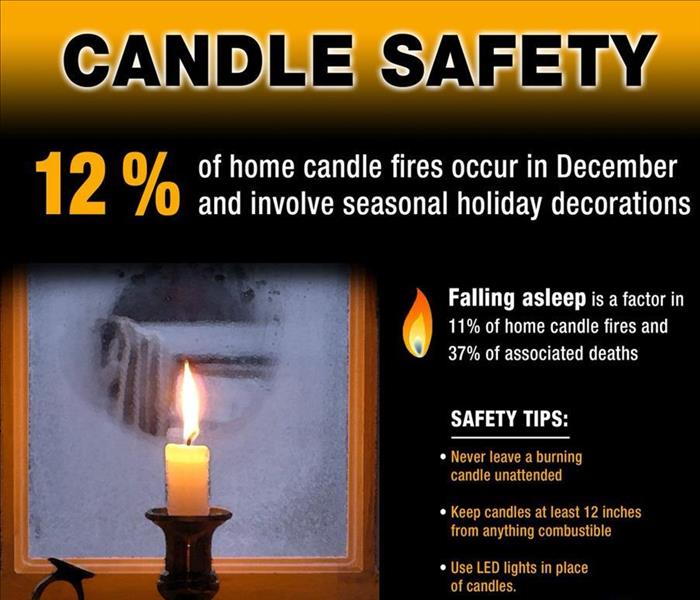 Candle fire statistics
Candle fire statistics
While house fires are always a big risk, winter is the most common time that house fires are likely to occur. This is due to a variety of factors that come into play, including an increase in celebrations, a lowering of temperatures and the dangers of an open flame. In order to help you be aware of these factors and remain safe, we have compiled the most common cause of these fires and prevention tips to help.
Household Fire Causes in WintertimeAn Increase in Cooking
Regardless of the time of year, cooking is always the leading cause of household fires. In winter, this is compounded with the likelihood that people are cooking more meals and possibly baking unfamiliar dishes, creating more of an opportunity for a fire to occur.
The Risk of Heaters
The way we heat our homes has a lot to do with our overall fire risk, as heaters are often a cause. Using portable heaters with subpar safety features or letting the fireplace run without a screen in place are both common causes of fires that can easily be prevented.
Candles and Decorations
Candles experience a surge in popularity during winter, both for the pleasant smell as well as for holiday celebrations. Any time there is an open flame—even a small one from a candle—there is an increase in the risk of a fire. Additionally, holiday decorations that rely on electricity can pose a fire risk as well, as they can deteriorate in storage and cause sparks or shorts.
Fire Prevention Best PracticesBeing diligent about preventing fires is a great way to ensure your likelihood of being present for one is lowered. It is important to practice this prevention at any time of year, but these tips are tailored especially to the common instances of wintertime fires:
- Check smoke alarms once every 30 days and replace every 10 years.
- Always monitor open flames.
- Select space heaters with automatic shut-offs in case they tip over.
- Utilize a screen every time you use a fireplace.
- Draft and practice an emergency escape plan with your household.
If your home has been impacted by a fire, call us right away. We are leaders in restoration and can help you recover quickly after a fire occurs.
The Quality of Your Restoration Company Matters | SERVPRO® of East Honolulu
11/9/2019 (Permalink)
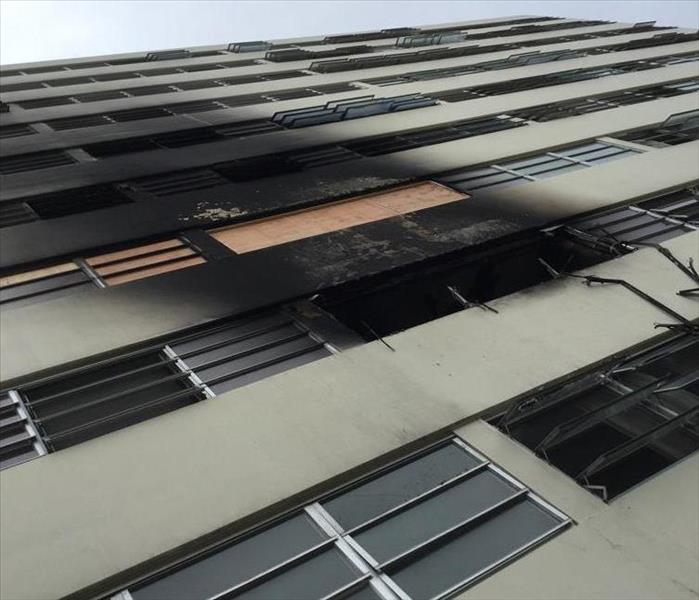 Fire caused by one unit affected multiple residents at this Oahu apartment complex
Fire caused by one unit affected multiple residents at this Oahu apartment complex
As winter approaches, it is important for homeowners to be sure they are fully prepared for a fire. The winter months are when the most home fires occur according to the Red Cross.
It is wise for every household to develop their own emergency fire escape plan to prepare for the moment a fire breaks out—but preparing for the aftermath is also important. By deciding in advance what restoration company to work with after a fire, you can get the restoration process in motion immediately in order to have your home back to its pre-fire condition.
Fire Cleanup in 3 PartsWorking with an experienced fire restoration company is the best way to get peace of mind after a fire. Not only will you have a guarantee that your restoration will be done right, but they will also be able to handle the majority of your belongings instead of only being able to salvage bits and pieces. After a fire, here are the three types of cleanups we can perform:
Structural Cleaning
Fires can not only damage paint and drywall, but they can also cause harm to the structural elements of your home. By performing testing, we can determine the exact extent of this damage so that we can ensure every damaged element is restored. Then our technicians will bring in their equipment to begin the cleaning and restoration process.
Content Cleaning
With the contents of your home, it is often far more cost-effective to have them restored rather than to replace them, which is why we ensure we have the ability to do this. We have both wet and dry cleaning machines to handle a variety of object types. We can often restore most of a home’s contents, from electronics to paintings to wooden furniture. This ensures your favorite items are safe to use and that you do not have to go through the stressful replacement process.
Deodorization Services
Lingering smoke and soot after a fire might cause unpleasant odors, but they can also cause negative health effects. For this reason, air quality cleanup is a very important part of the restoration process. By bringing in foggers and air scrubbers, we are able to fully remove these particles in lieu of simply covering up the scent.
If you’ve been affected by a fire, reach out to us right away! We are here 24⁄7 to help you recover.
October is Fire Prevention Month!
10/10/2019 (Permalink)
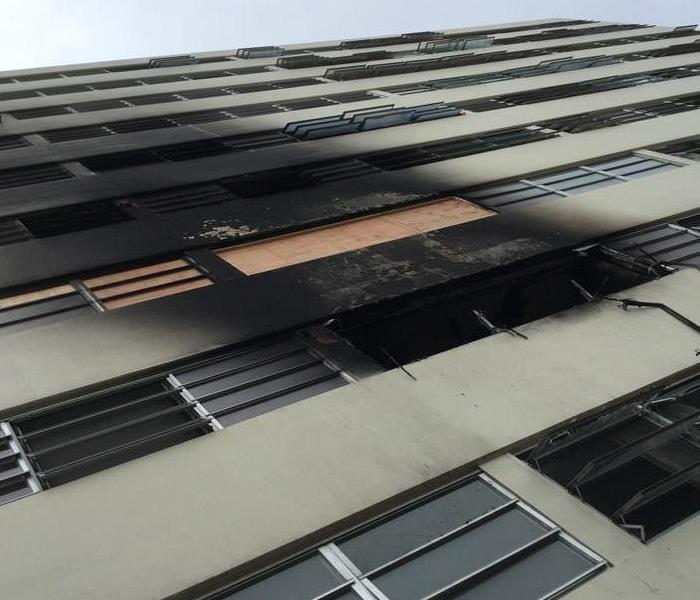 Aftermath of Honolulu apartment complex showing fire damage due to negligence
Aftermath of Honolulu apartment complex showing fire damage due to negligence
As we enter the middle of October, it is important for everyone to be aware of what they can do to protect their home and family in a time of emergency. October is Fire Prevention Month!
The goal of fire prevention is to educate the public to take precautions to prevent potentially harmful fires and become educated about surviving them.
Below are a few tips and reminders:
Stop, drop and roll...
If one's clothing catches on fire, the most effective method of extinguishing the fire is to stop, drop to the ground, and roll back and forth to smother the flame. Running around will simply fan the flames.
Smoke detectors save lives!!!
- Working smoke detectors reduce the chances of death in a fire by half.
- Nearly 900 lives could be saved annually if every home had working smoke detectors.
- Even just one smoke detector reduces the chances of death by almost half.
- Nearly half of all fire survivors remember hearing their smoke alarm.
- Deaths due to fire have decreased by half since the invention of the smoke detector.
- Most deaths due to fire occur at night when people are sleeping.
Smoke detector maintenance!!!
- The most common cause of smoke detector failure is missing or disconnected batteries.
- Nuisance alarms are the most common reason for deliberately disconnecting batteries.
- Missing, disconnected, or dead batteries account for 73% of smoke detector failures.
- There are more homes with no working smoke detectors than there are homes without any smoke detectors at all. There are millions of homes in each category.
- Smoke detectors should be installed on every level of your home.
- Change your batteries twice a year.
- Clean your detectors also.
- Replace the entire unit every ten years.
- Disconnecting your batteries, for any reason, is dangerous and illegal.
Don't just leave to do something else...
One of the most common reasons for fires is how people often leave stoves, ovens, toasters, clothing irons, barbecues, and candles unattended.
Now, we've covered some important facts about fire safety for the home, don't forget about your business...
Oh, and DON'T forget about fire extinguishers!!
Fire extinguishers are active fire protection devices used to extinguish or control small fires, often in emergency situations. It is not intended for use on an out-of-control fire, such as one which has reached the ceiling, endangers the user (i.e., no escape route, smoke, explosion hazard, etc.), or otherwise requires the expertise of a fire department.
Things to Check for if Lightning Strikes Your Home
10/5/2019 (Permalink)
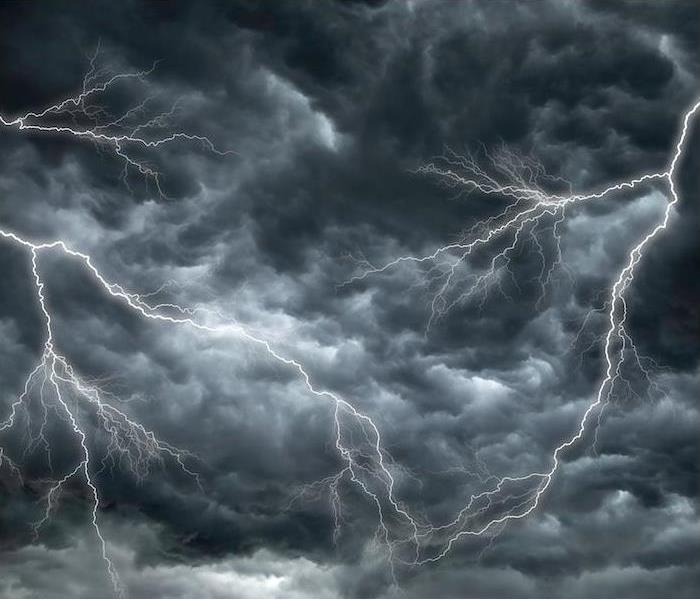 Lightning is a dramatic display from a thunderstorm, but it can also cause serious complications. Fires, damage to structures and damage to electrical
Lightning is a dramatic display from a thunderstorm, but it can also cause serious complications. Fires, damage to structures and damage to electrical
How Lightning Is Made
All thunderstorms are electrically charged, and this is what serves as a catalyst for every clap of thunder and bolt of lightning. When we see lightning, it is actually the thunderstorm offloading some of its energy, either through the clouds creating thunder or in the direction of the Earth.
Air is not an ideal conductor, which is why lightning often strikes through an object as it heads toward the ground. This is what makes homes so vulnerable and easily damaged by lightning strikes.
Things to Check if Lightning Strikes Your HomeBecause a home is full of wiring and water, lightning can travel easily through these things and cause extensive damage along the way. If your home has been struck, here’s what to check for:
1. Hot spots within walls. At around 500,000 degrees, lightning is often hot enough to ignite a house immediately upon striking. Additionally, it can cause damage to wiring so severe that it makes a fire likely to occur within the walls in the future. An electrician can perform an inspection to check for hotspots and make recommendations for repairs.
2. Damaged electronics. The voltage produced by a lightning strike is far more than what household electronics are designed to handle, and they can be severely damaged if they are plugged in when lightning strikes. Surge protectors can prevent damage from occurring, and you should always thoroughly check electronics after a strike.
3. Structure damage. The powerful shock waves that produce thunder can also produce damage when lightning strikes the ground. Because shock waves have been known to crack foundations and shatter windows, it is wise to inspect the home after a storm dissipates.
If your home has been affected by storm damages or lightning-related fires, give us a call today! We are experts in damage cleanup and can restore your damage quickly.
Facts about Smoke and Soot
7/26/2019 (Permalink)
Smoke and soot is very invasive and can penetrate various cavities within your home, causing hidden damage and odor. Our smoke damage expertise and experience allows us to inspect and accurately assess the extent of the damage to develop a comprehensive plan of action.
Smoke and soot facts:
- Hot smoke migrates to cooler areas and upper levels of a structure.
- Smoke flows around plumbing systems, seeping through the holes used by pipes to go from floor to floor.
- The type of smoke may greatly affect the restoration process.
Different Types of Smoke
There are two different types of smoke–wet and dry. As a result, there are different types of soot residue after a fire. Before restoration begins, we will test the soot to determine which type of smoke damage occurred. The cleaning procedures will then be based on the information identified during pretesting. Here is some additional information:
Wet Smoke – Plastic and Rubber
- Low heat, smoldering, pungent odor, sticky, smeary. Smoke webs are more difficult to clean.
Dry Smoke – Paper and Wood
- Fast burning, high temperatures, heat rises therefore smoke rises.
Our Fire Damage Restoration Services
Since each smoke and fire damage situation is a little different, each one requires a unique solution tailored for the specific conditions. We have the equipment, expertise, and experience to restore your fire and smoke damage. We will also treat your family with empathy and respect and your property with care.
Smoke Alarms
4/13/2018 (Permalink)
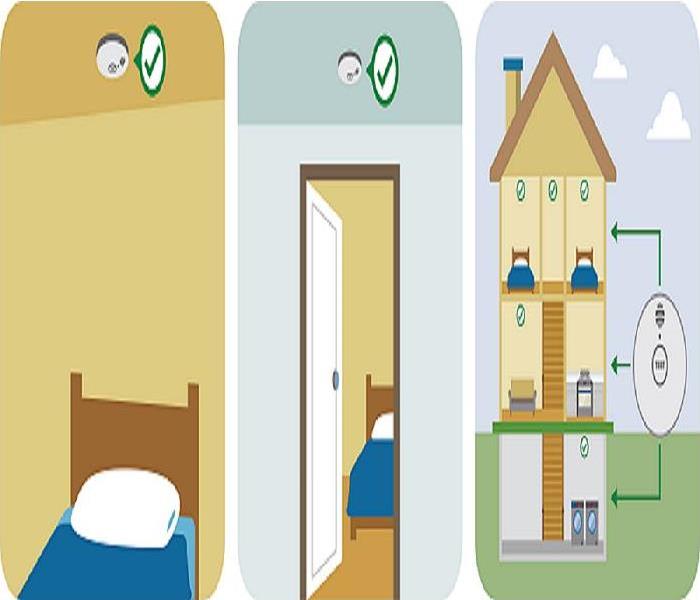 Have smoke alarms in every sleeping room, outside each separate sleeping area, and on every level of the home, including the basement.
Have smoke alarms in every sleeping room, outside each separate sleeping area, and on every level of the home, including the basement.
Smoke alarms are a key part of a home fire escape plan. When there is a fire, smoke spreads fast. Working smoke alarms give you early warning so you can get outside quickly.
- A closed door may slow the spread of smoke, heat and fire. Install smoke alarms in every sleeping room and outside each separate sleeping area. Install alarms on every level of the home. Install alarms in the basement. Smoke alarms should be interconnected. When one sounds, they all sound.
- Large homes may need extra smoke alarms.
- Test all smoke alarms at least once a month. Press the test button to be sure the alarm is working.
- Today’s smoke alarms will be more technologically advanced to respond to a multitude of fire conditions, yet mitigate false alarms.
- A smoke alarm should be on the ceiling or high on a wall. Keep smoke alarms away from the kitchen to reduce false alarms. They should be at least 10 feet (3 meters) from the stove.
- People who are hard-of-hearing or deaf can use special alarms. These alarms have strobe lights and bed shakers.
- Replace all smoke alarms when they are 10 years old.
- Smoke alarms are an important part of a home fire escape plan.
According to National Fire Protection Association (NFPA), 96% of American homes have at least one smoke alarm, no smoke alarms were present or none operated in two out of five (41%) of the reported home fires between 2003-2006. Almost two-thirds of home fire deaths resulted from fires in homes with no smoke alarms or no working smoke alarms.
Tens Things You Should Know To Prevent Kitchen Fires
4/13/2018 (Permalink)
Did you know the kitchen is where more home fires occur than anywhere else in the house and that cooking is the number one cause of home fires? The American Red Cross has steps everyone can follow to avoid a cooking fire:
1. Never leave cooking food unattended – stay in the kitchen when frying, grilling or broiling food. If you have to leave the kitchen, even for a second, turn off the stove.
2. Check your food regularly while cooking and remain in the home while cooking.
3. Use a timer so you’ll remember that the stove or oven is on.
4. Don’t wear loose clothing or dangling sleeves while cooking.
5. Keep the kids away from the cooking area. Enforce a “kid-free zone” and make them stay at least three feet away from the stove.
6. Keep anything that can catch fire - pot holders, oven mitts, wooden utensils, paper or plastic bags, food packaging, and towels or curtains—away from your stove, oven or any other appliance in the kitchen that generates heat.
7. Clean cooking surfaces on a regular basis to prevent grease buildup.
8. Consider purchasing a fire extinguisher to keep in your kitchen. Contact your local fire department to take training on the proper use of extinguishers.
9. Always check the kitchen before going to bed or leaving the home to make sure all stoves, ovens, and small appliances are turned off.
10. Install a smoke alarm near your kitchen, on each level of your home, near sleeping areas, and inside and outside bedrooms if you sleep with doors closed. Use the test button to check it each month. Replace all batteries at least once a year.
Smoking is a leading cause of home fire deaths.
4/6/2018 (Permalink)
Don't let your world go up in smoke. Home fires ARE preventable and here are a few helpful tips:
- Smoke outside. Many things in your home can catch on fire if they touch something hot like a cigarette or ashes. It is always safer to smoke outside.
- Put cigarettes out all the way. Do this every time. Don’t walk away from lit cigarettes and other smoking materials. Put water on the ashes and butts to make sure they are really out before you put them in the trash.
- Be alert. Do not smoke after taking medicine that makes you tired. You may not be able to prevent or escape from a fire if you are sleepy or have taken medicine that makes you tired.
- Never smoke around medical oxygen. Medical oxygen can explode if a flame or spark is near. Even if the oxygen is turned off, it can still catch on fire.
- Never smoke in bed. Mattresses and bedding can catch on fire easily. Do not smoke in bed because you might fall asleep with a lit cigarette.
- Put your cigarette out in an ashtray or bucket with sand. Use ashtrays with a wide base so they won’t tip over and start a fire.
About half of all home electrical fires involve home electrical wiring
4/6/2018 (Permalink)
Electrical fires in our homes claim the lives of some 280 Americans each year and injure 1,000 more. Some of these fires are caused by electrical system failures, but many more are caused by incorrectly installed wiring and overloaded circuits and extension cords. FEMA and the U.S. Fire Administration would like you to know that there are simple steps you can take to prevent the loss of life and property resulting from electrical fires.
- Plug only one heat-producing appliance (such as a coffee maker, space heater, or microwave) directly into a wall outlet at a time.
- Extension cords should only be used temporarily. Have an electrician install additional wall outlets where you need them.
- Never use an extension cord with a heat-producing appliance.
- Don’t overload extension cords or wall outlets.
- Check your electrical cords. If they are cracked or damaged, replace them. Don’t try to repair them.
- Use light bulbs that match the recommended wattage on the lamp or fixture.
- Electrical work should only be done by a qualified electrician.
Educating your child about Fire
4/26/2017 (Permalink)
Make an escape plan
It is important to have a plan when there are children in the home. Children sometimes need help getting out of the house, and they may not know how to escape or what to do unless an adult shows them.
- Have a plan for young children who cannot get outside by themselves. You will need to wake babies and very young children and help them get out. In your plan, talk about who will help each child get out safely.
- Know two ways out of every room. It is important to find two ways out of every room in the house, in case one exit is blocked or dangerous to use.
- Choose a meeting place outside the home. Children should know what to do when they hear a smoke alarm and there is no adult around. Help them practice going to the outside meeting place. Teach them to never go back inside a building that is on fire.
Keep children safe from fire and burns
Some children are curious about fire. There are simple steps you can take to keep you and the people you love safer from fire and burns.
- Keep children 3 feet away from anything that can get hot. Space heaters and stove-tops can cause terrible burns. Keep children at least 3 feet away from stoves, heaters or anything that gets hot.
- Keep smoking materials locked up in a high place. Never leave cigarette lighters or matches where children can reach them.
- Never play with lighters or matches when you are with your children. Children may try to do the same things they see you do.
Fire 101
4/1/2017 (Permalink)
Every day Americans experience the horror of fire but most people don't understand fire.
Fire is FAST!
There is little time! In less than 30 seconds a small flame can get completely out of control and turn into a major fire. It only takes minutes for thick black smoke to fill a house or for it to be engulfed in flames. Most deadly fires occur in the home when people are asleep. If you wake up to a fire, you won't have time to grab valuables because fire spreads too quickly and the smoke is too thick. There is only time to escape.
Fire is HOT!
Heat is more threatening than flames. A fire's heat alone can kill. Room temperatures in a fire can be 100 degrees at floor level and rise to 600 degrees at eye level. Inhaling this super-hot air will scorch your lungs. This heat can melt clothes to your skin. In five minutes, a room can get so hot that everything in it ignites at once: this is called flashover.
Fire is DARK!
Fire isn't bright, it's pitch black. Fire starts bright, but quickly produces black smoke and complete darkness. If you wake up to a fire you may be blinded, disoriented and unable to find your way around the home you've lived in for years.
Fire is DEADLY!
Smoke and toxic gases kill more people than flames do. Fire uses up the oxygen you need and produces smoke and poisonous gases that kill. Breathing even small amounts of smoke and toxic gases can make you drowsy, disoriented and short of breath. The odorless, colorless fumes can lull you into a deep sleep before the flames reach your door. You may not wake up in time to escape.
Only when we know the true nature of fire can we prepare our families and ourselves
https://www.ready.gov/home-fires.
HELP DO YOUR PART BY PREVENTING WILDFIRE
4/1/2017 (Permalink)
Each year, about 0.5% of Hawaii's total land area burns each year, equal to or greater than the proportion burned of any other US state. Over 98% of wildfires are human caused. Human ignitions coupled with an increasing amount of nonnative, fire-prone grasses and shrubs and a warming, drying climate have greatly increased the wildfire problem.
BE ALERT AND PREPARED!
- Clear leaves & debris from gutters and roof
- Maintain 6 inches in between siding and ground
- Cover combustible materials next to and under home
- Protect windows - clear vegetation, close them when the fire comes
- Create defensible space within 100 feet of home or up to boundary line
- Keep grass short
- Keep tree branches high off ground
- Clear brush & leaf piles
- Create & practice a family evacuation plan
- Include assisting neighbors w/ special needs in your evacuation plans
- Make sure fire vehicles and personnel can defend your home from all sides
- Make sure hydrants, pools, & water tanks are accessible
MOST IMPORTANTLY CALL 911 THEN SERVPRO OF EAST HONOLULU 808-395-9545 FOR ALL YOUR RESTORING NEEDS
5 Common Causes of Electrical Fire
1/25/2017 (Permalink)
According to the U.S. Fire Administration, in 2014, electrical fires accounted for 6.3 percent, nearly 24,000 fires, of all residential fires, 11 percent of the fires where someone died and 7 percent of the fires where someone was injured.
The months with the most electrical fires are December and January due to increased use of heating appliances and lights. Most electrical fires start in the bedroom, but the highest number of fatalities occur with fires located in the living room, family room and den.
Some electrical fires happen because of problems in house wiring or appliance failure, but many occur due to mistakes that homeowners make like overloading electrical outlets or extension cords.
Here are the 5 most common causes of electrical fires.
1. Faulty outlets, appliances
Most electrical fires are caused by faulty electrical outlets and old, outdated appliances. Other fires are started by faults in appliance cords, receptacles and switches. Never use an appliance with a worn or frayed cord which can send heat onto combustible surfaces like floors, curtains, and rugs that can start a fire.
Running cords under rugs is another cause of electrical fires. Removing the grounding plug from a cord so it can be used in a two-prong electrical outlet can also cause a fire. The reason appliances have the extra prong is so they can be only used in outlets that can handle the extra amount of electricity that these appliances draw.
2. Light fixtures
Light fixtures, lamps and light bulbs are another common reason for electrical fires. Installing a bulb with a wattage that is too high for the lamps and light fixtures is a leading cause of electrical fires. Always check the maximum recommended bulb wattage on any lighting fixture or lamp and never go over the recommended amount.
Another cause of fire is placing materials like cloth or paper over a lampshade. The material heats up and ignites, causing a fire. Faulty lamps and light fixtures also frequently result in fires.
3. Extension cords
Misuse of extension cords is another electrical fire cause. Appliances should be plugged directly into outlet and not plugged into an extension cord for any length of time. Only use extension cords as a temporary measure. If you do not have the appropriate type of outlets for your appliances, hire an electrician to install new ones.
4. Space heaters
Because these types of heaters are portable, many times people put them too close to combustible surfaces such as curtains, beds, clothing, chairs, couches and rugs. Coil space heaters are especially dangerous in this regard because the coils become so hot they will almost instantaneously ignite any nearby flammable surface.
If you do use space heaters, use the radiator-type that diffuse heat over the entire surface of the appliance. These are less likely to ignite flammable items, but should still be kept away from them.
5. Wiring
Outdated wiring often causes electrical fires. If a home is over 20 years old, it may not have the wiring capacity to handle the increased amounts of electrical appliances in today’s average home, such as computers, wide-screen televisions, video and gaming players, microwaves and air conditioners.
Breakers should be triggered when circuits get overloaded by too much electricity, but outdated breaker boxes often have worn connectors that do not work, causing the system to overload and start an electrical fire.
How to minimize damage after a fire
1/26/2016 (Permalink)
What To Do After A Fire
- Limit movement in the home to prevent soot particles from being embedded into upholstery and carpets.
- Keep hands clean so as not to further soil upholstery, walls and woodwork.
- Place clean towels or old linens on rugs, upholstery and carpet traffic areas.
- If electricity is off, empty freezer and refrigerator and prop doors open.
- Clean and protect chrome with light coating of petroleum jelly or oil.
- Wash houseplants on both sides of leaves.
- Change HVAC filter.
- Tape double layers of cheesecloth over air registers.
What NOT To Do After A Fire
- Don't attempt to wash any walls or painted surfaces or shampoo carpet or upholstery without contacting your SERVPRO Franchise Professional.
- Don't attempt to clean any electrical appliances that may have been close to fire, heat or water without consulting an authorized repair service.
- Don't use any canned or packaged food or beverages that may have been stored near the fire, heat or water.
- Don't turn on ceiling fixtures if ceiling is wet. The wiring may be damaged.
- Don't send garments to an ordinary dry cleaner. Improper cleaning may set smoke odor.






 24/7 Emergency Service
24/7 Emergency Service


